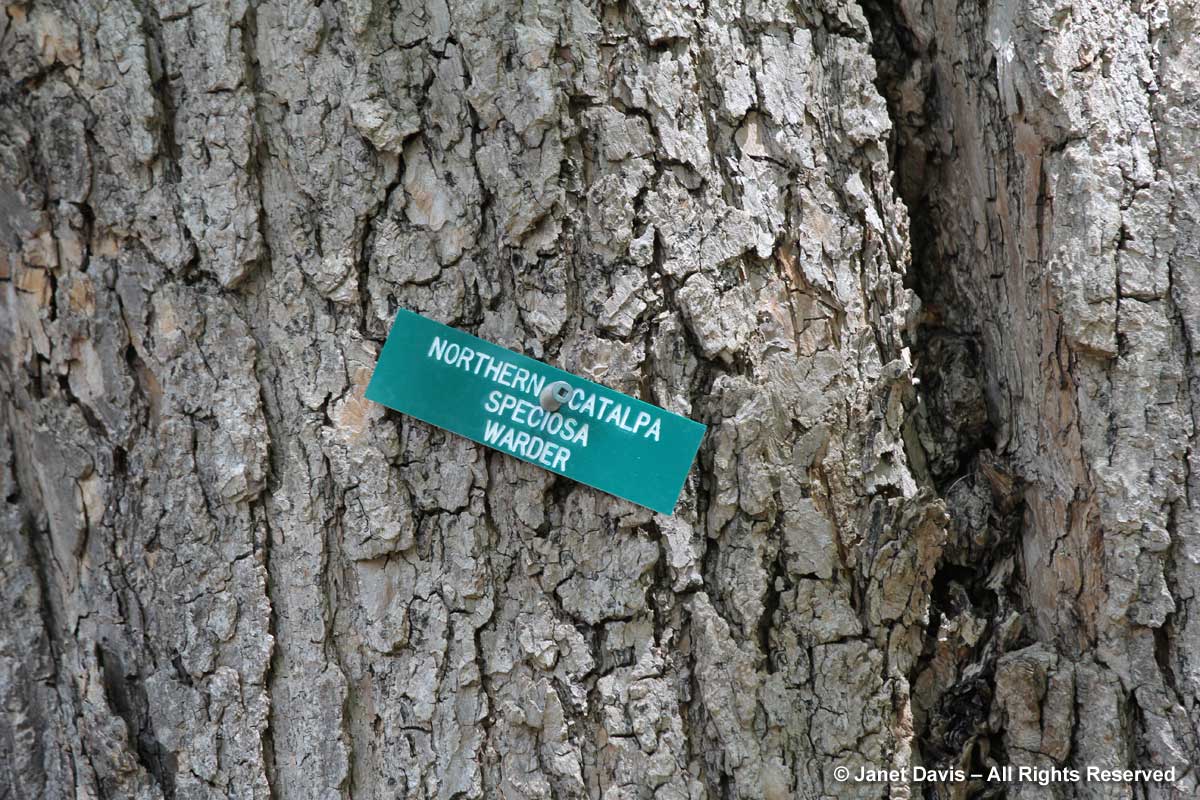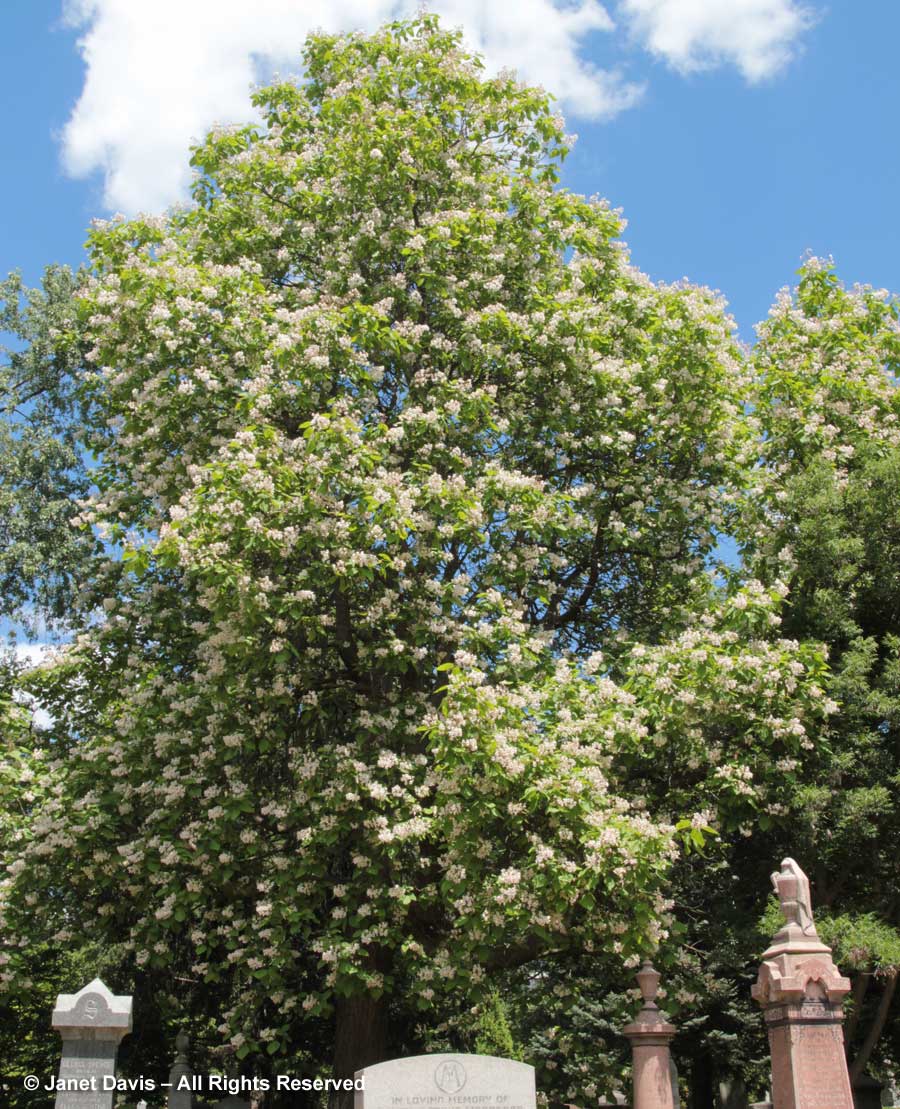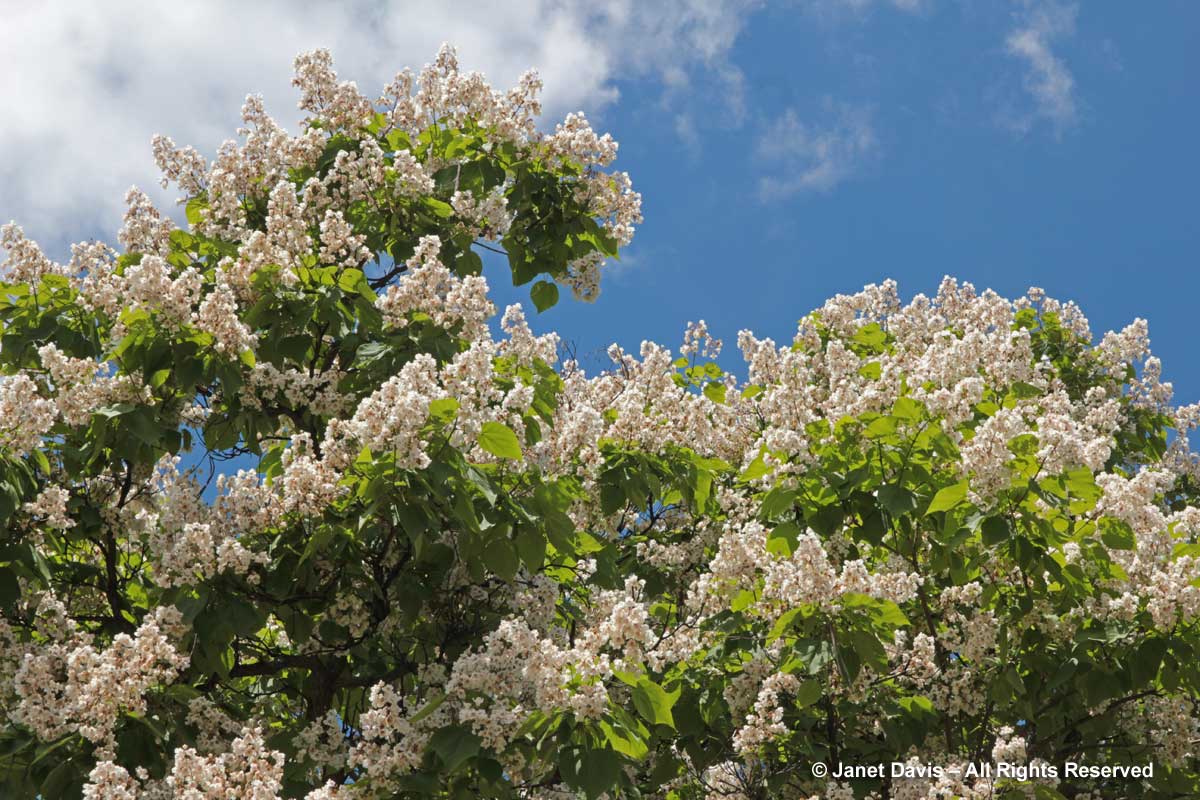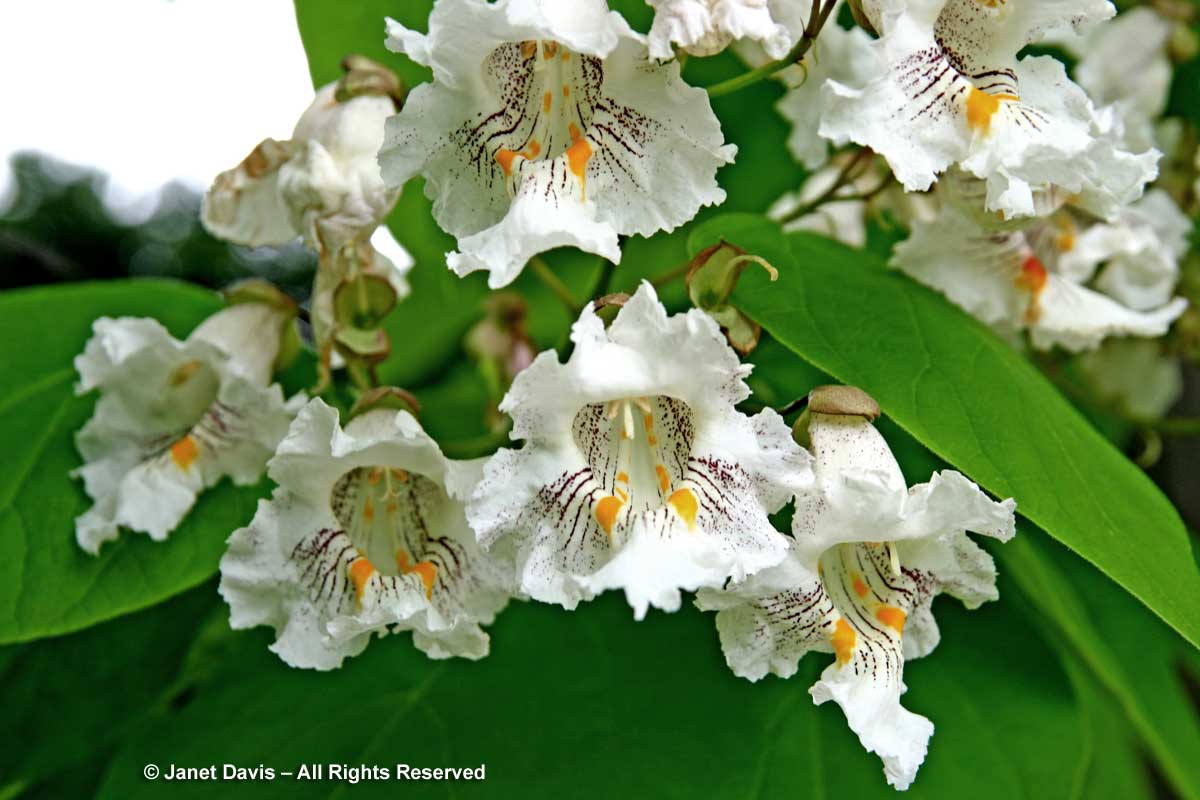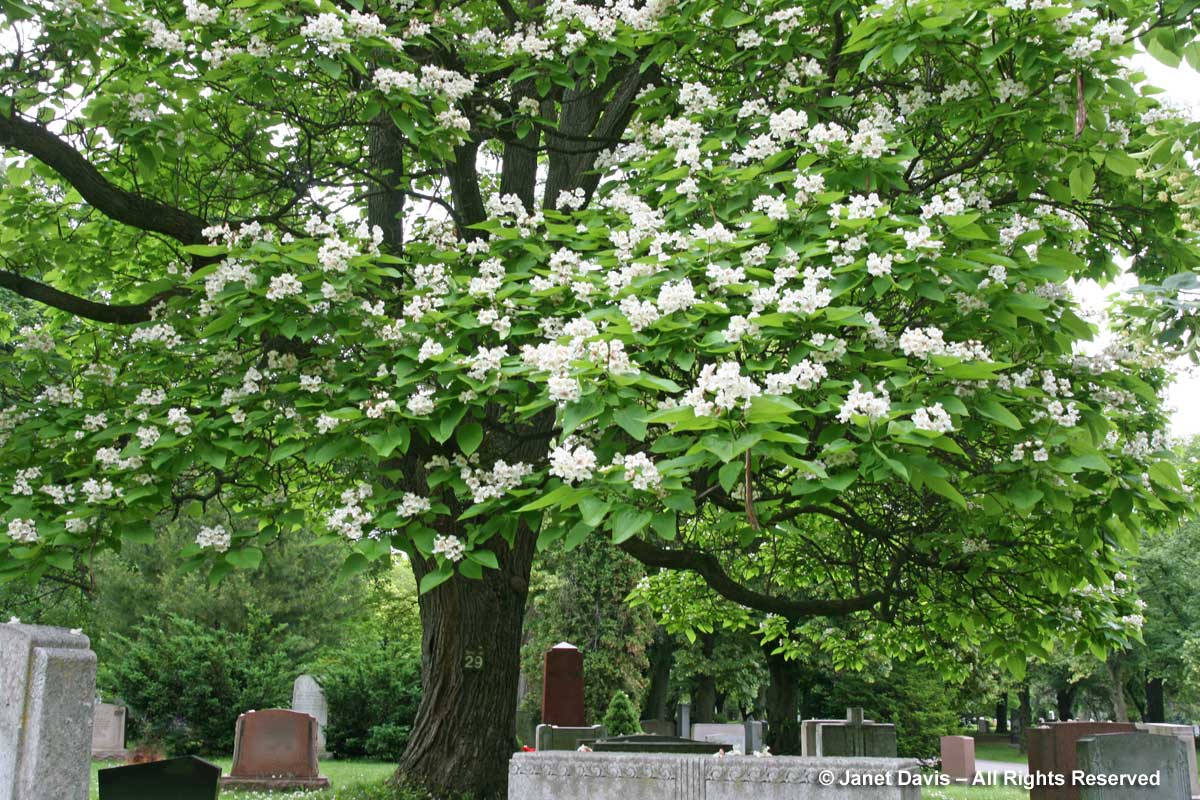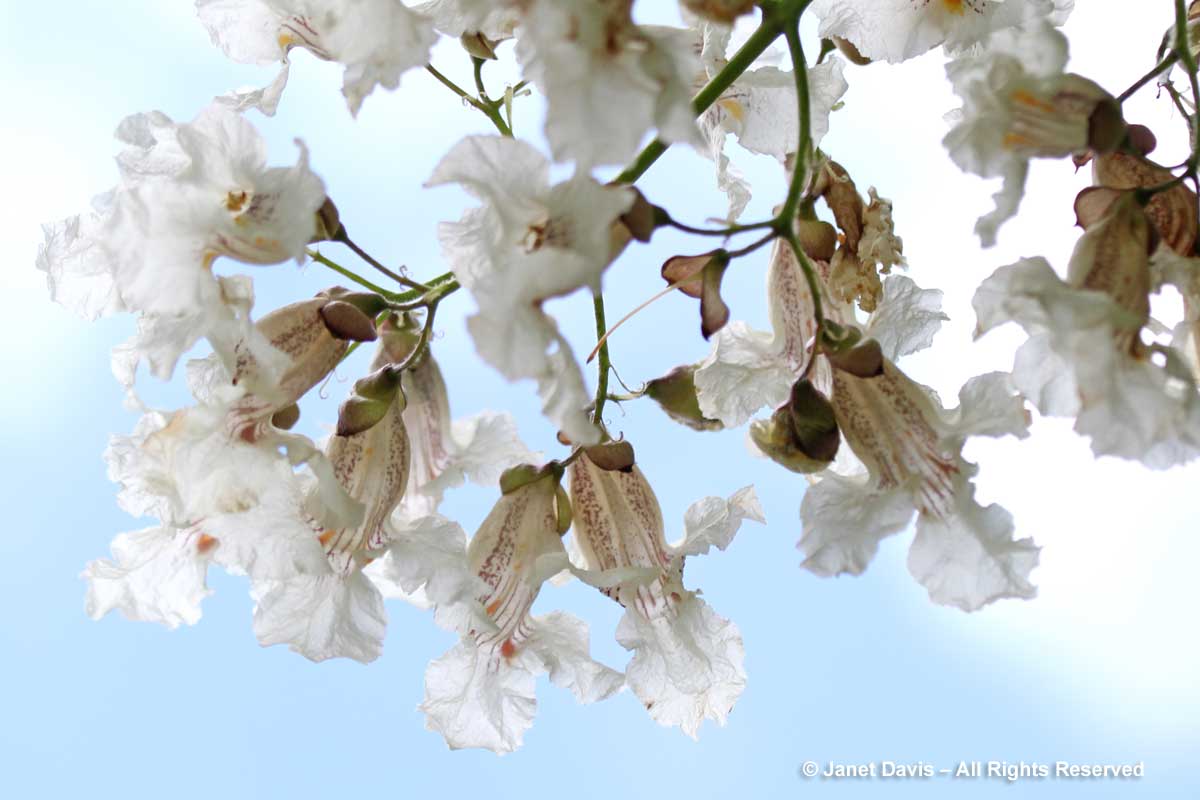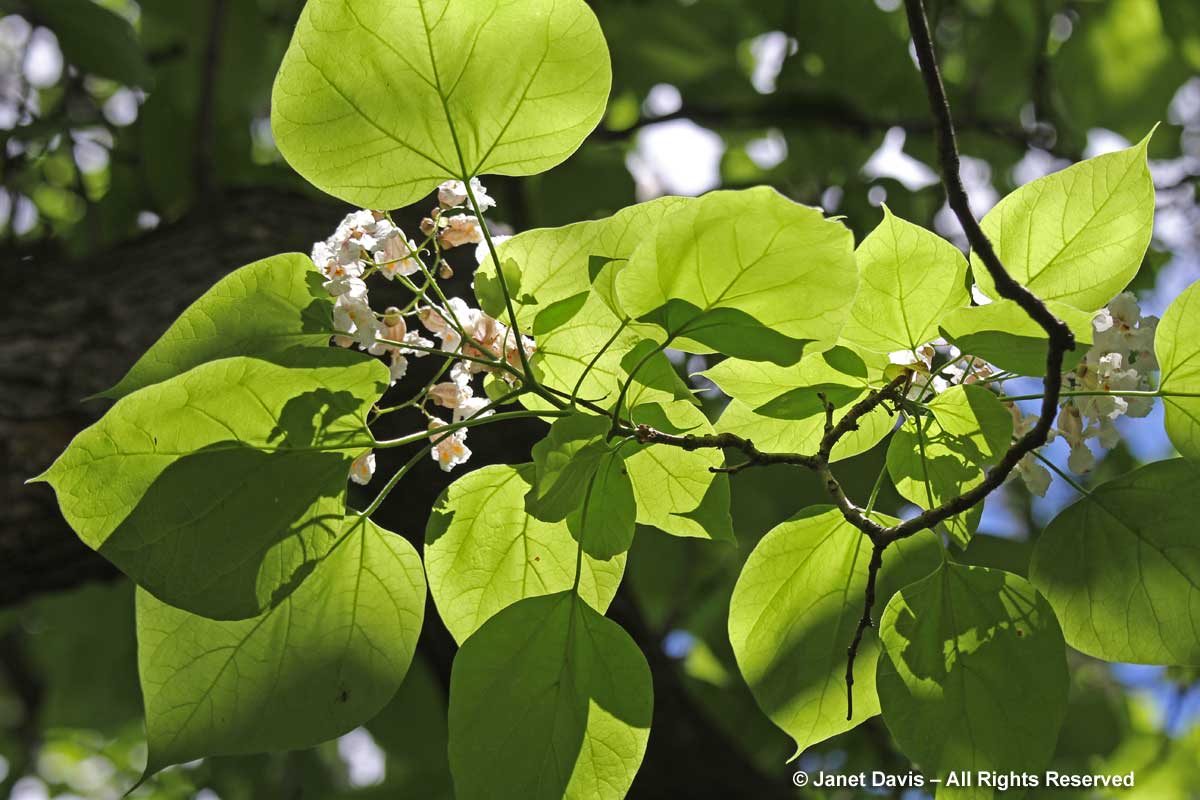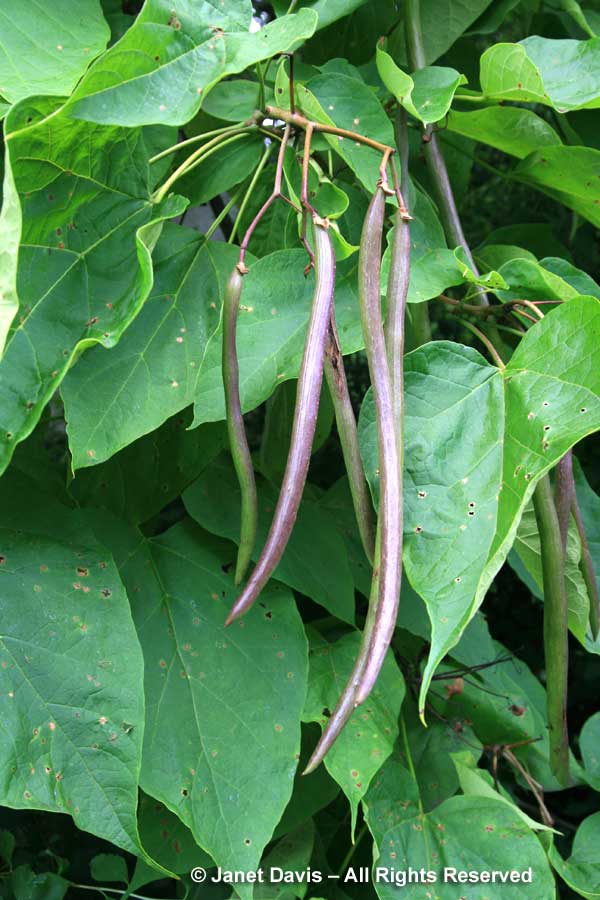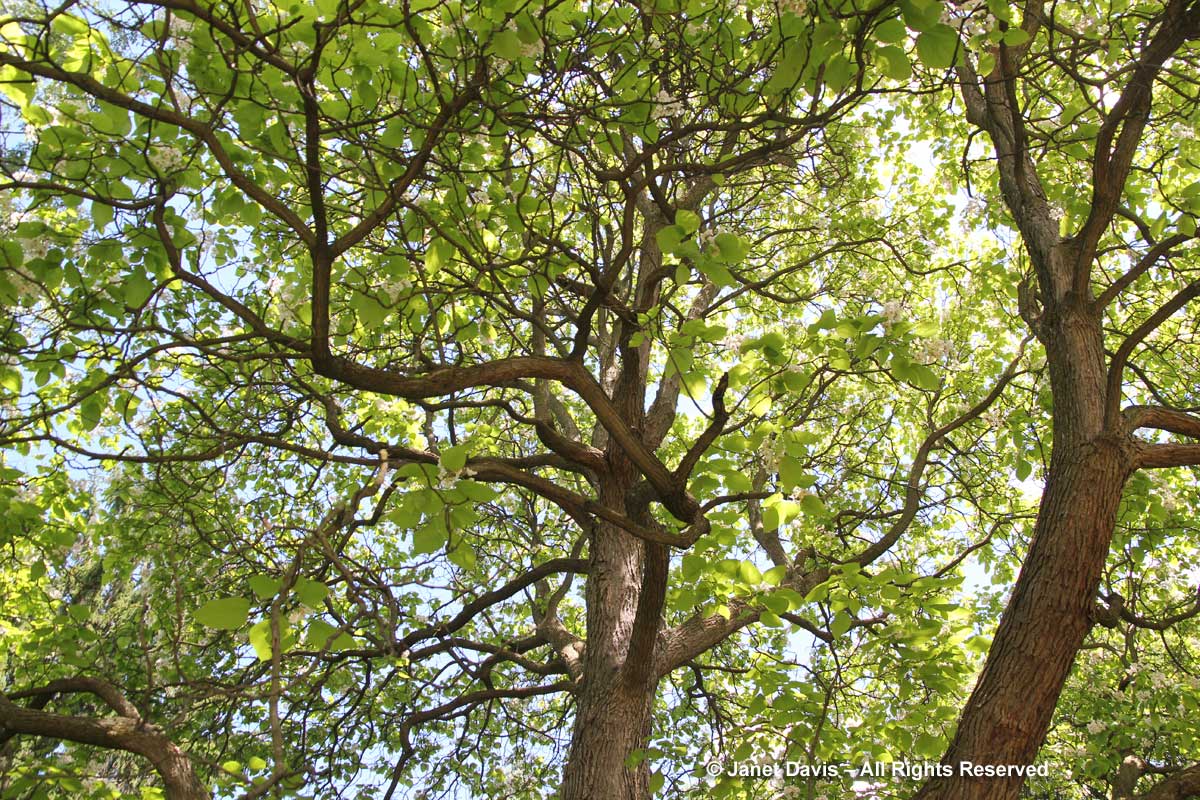There’s no better place to celebrate ‘purple’ – my featured colour for the month of June – than the lush, lupine-spangled, late-spring gardens in the ornamental potager behind Toronto’s historic Spadina House.
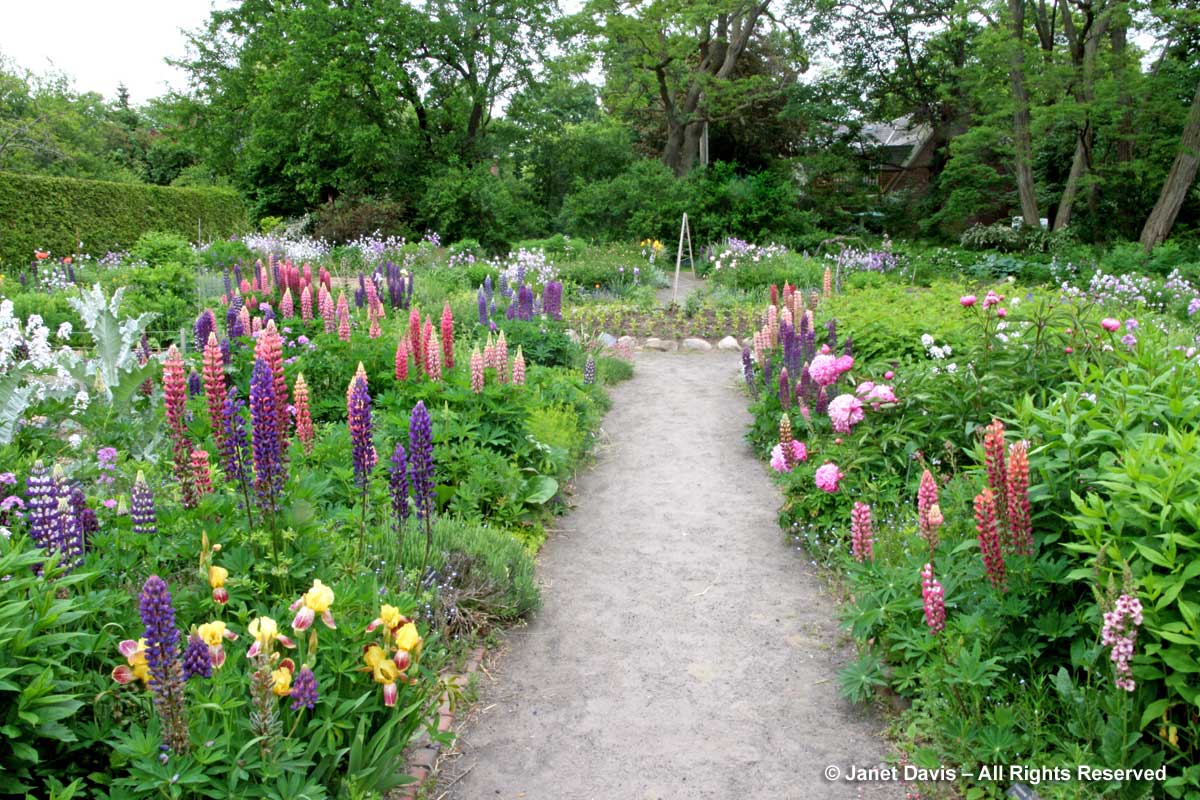
Now a city-owned museum, Spadina House was built in 1866 by Toronto’s James Austin (founder of Dominion Bank, later merged to become Toronto-Dominion Bank, then TD Bank). The property, at the time a 200-acre concession, had been settled originally in 1818 by Dr. William Baldwin, an Irish-born lawyer, doctor, schoolmaster and eventual two-term assemblyman in the town of York (later called Toronto) on land inherited by his wife Phoebe Willcocks and her sister Maria, from their father Joseph. Sitting at the crest of the hill that leads from midtown to downtown – in historical geologic terms, it’s the escarpment overlooking the sloping shoreline of Lake Ontario’s ice-age predecessor, Lake Iroquois – Dr. Baldwin mentioned the name for his new rural home in a letter to his family in Ireland. “I have a very commodious house in the country. I have called the place Spadina – the Indian word for Hill or Mont.” Baldwin’s name came from his hearing of the Ojibway word ishapadenah, which meant “hill” or “rise of land” (and its correct pronunciation for the house is Spa-DEE-na, not Spa-DYE-na). Using a width of two chains (132 feet), Dr. Baldwin also laid out Spadina Avenue itself from Queen Street north to Davenport, at the bottom of his hill. In 1837, Lieutenant-Governor Bond Head ordered the extension of the road further south, almost to the lake.
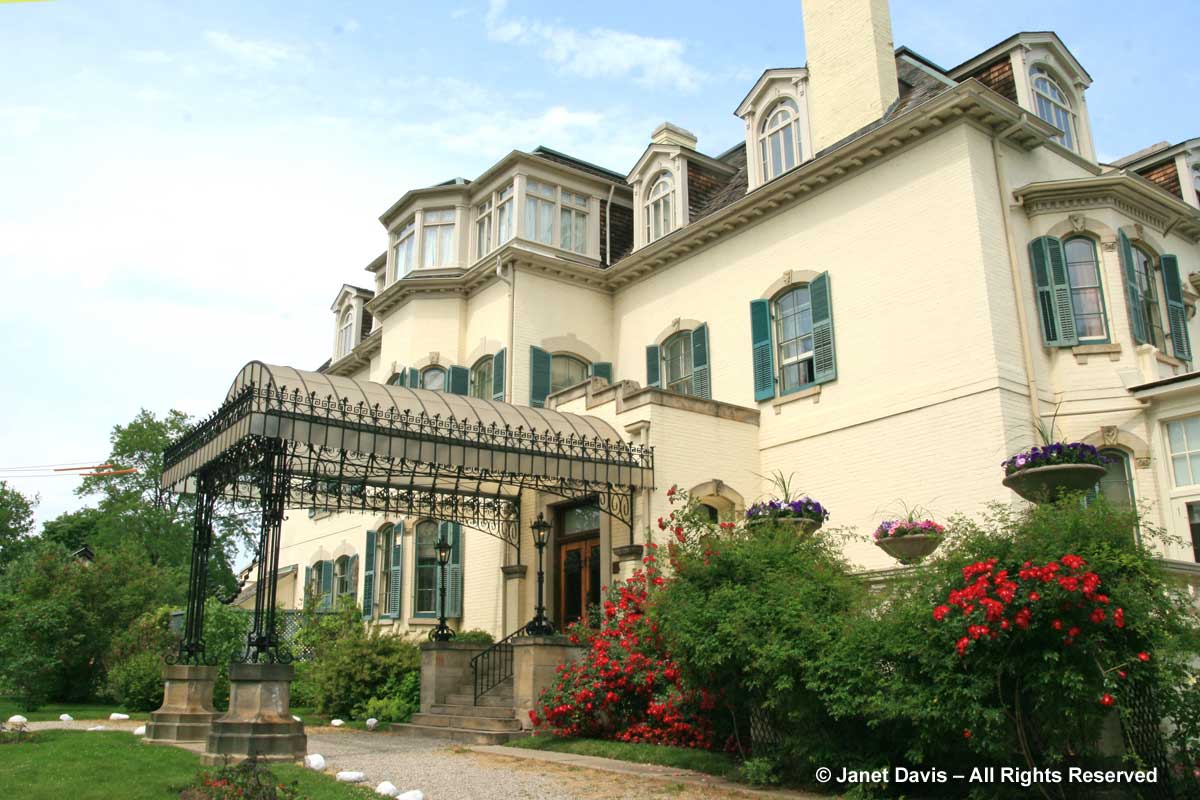
What is Purple?
Before we head to the back garden at Spadina House, let’s look for a moment at colour. Purple is not a spectral hue, like short-wavelength indigo and violet – the “I” and “V” in our old mnemonic ROYGBIV for the red-orange-yellow-green-blue-indigo-violet of the visible spectrum we see in a rainbow.

Rather “purple” is a word that people today use to describe various combinations of red and blue; it’s also sometimes used to describe colours that are really indigo or violet. It’s a muddy minefield of a colour word, its use open to broad interpretation and its misuse widespread (especially in plant catalogue descriptions!) But purple has an actual history, its etymological origins in the Greek word πορφύρα (porphura), the name given to an ancient pigment from the inky glandular secretions of a few species of spiny murex sea snails that have been harvested from the eastern Mediterranean, perhaps as early as 1500 B.C. In her fascinating book Color: A Natural History of the Palette, Victoria Finlay recounts how she visited the Lebanese city of Tyre, stayed in the Murex Hotel, and sneaked past guards to get to the ancient dye baths that gave rise to the colour Tyrian purple. When she finally found samples of cloth dyed with the colour in the National Museum in Beirut, Finlay was surprised and delighted. “Because it wasn’t purple at all: it was a lovely shade of fuchsia.” More like the hue Pliny wrote about in the first century A.D. “Next came the Tyrian dye, which could not be purchased for a thousand denarii a pound”, and “most appreciated when it is the color of clotted blood, dark by reflected and brilliant by transmitted light.” A colour, perhaps, like this web version of Tyrian purple, below, which looks like Finlay’s deep fuchsia-pink.
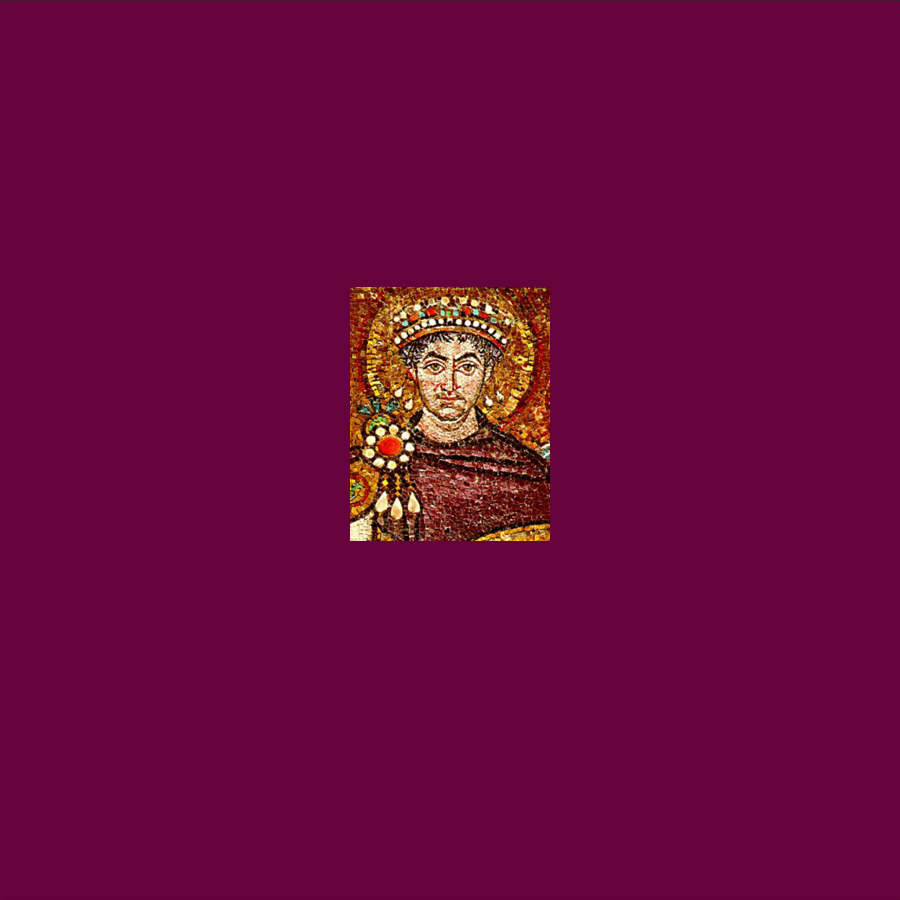
The august figure in the centre of my Tyrian purple sample is the Byzantine Emperor Justinian 1 (482-565). Note the “clotted blood” colour of his garments. Justinian was responsible for building the magnificent Hagia Sophia in Constantinople (now Istanbul) in 537, and there is a purple connection to that ancient structure. When I visited it a few years ago, I was struck by the crimson-red pillars; they are made of the mineral porphyry, a word which also traces its roots to the Greek word for purple.
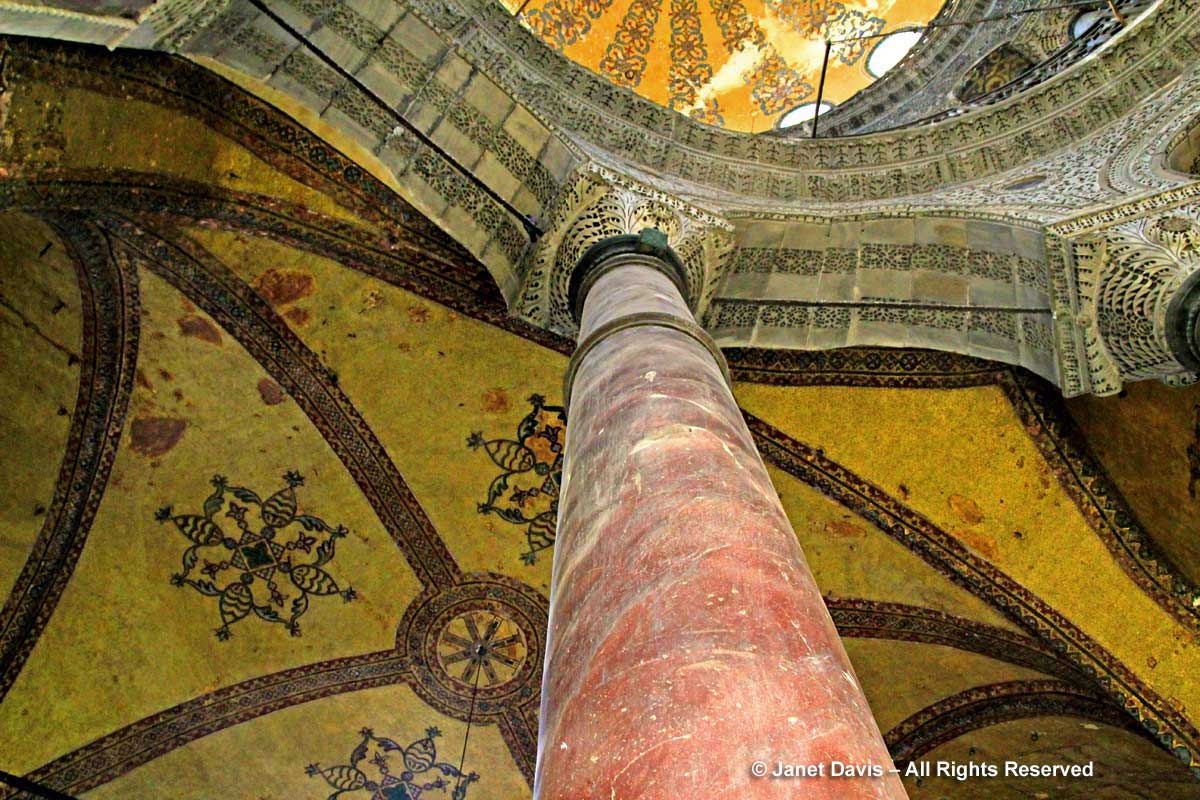
If you were of high enough rank in the Byzantine Empire to warrant Tyrian purple robes, you were considered “born in the purple” and your honorific name very possibly reflected that fact, as with young Porphyrogenetos, below, (Latin, Porphyrogenitus, Greek Πορφυρογέννητο), son of the emperor.
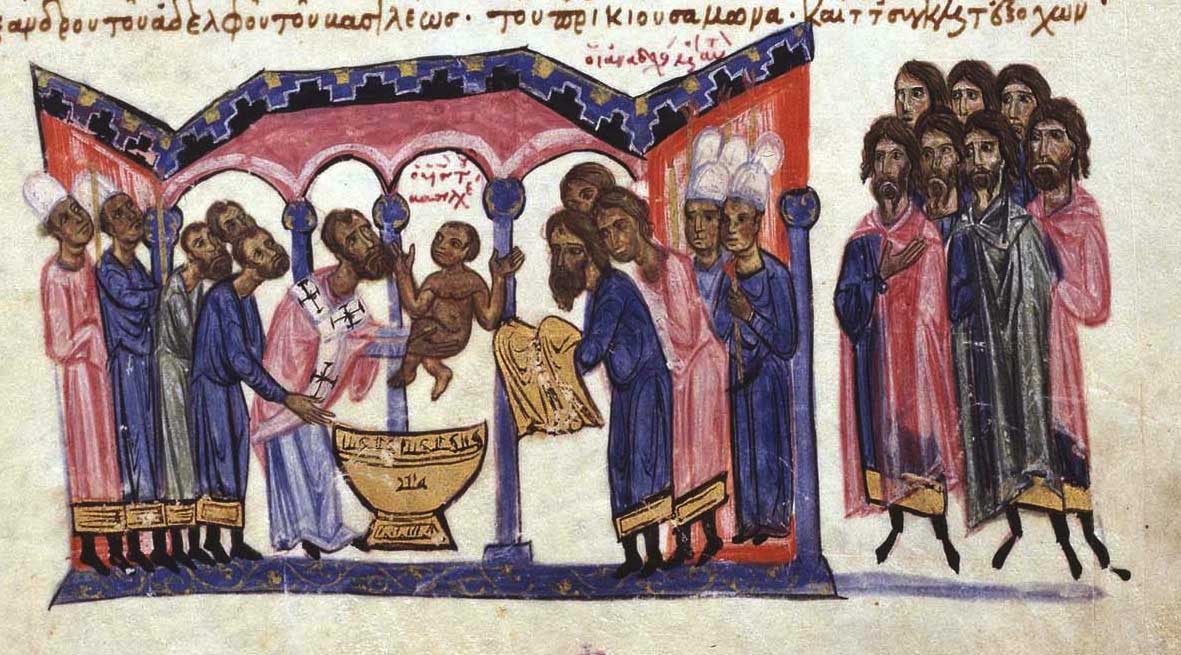
But much earlier – 500 years earlier – Roman emperors had worn Tyrian purple, including the most famous of all, Julius Caesar (100-44 B.C.). In fact, unless you had the power and wealth to wear Tyrian purple robes, you were prohibited from wearing the colour, and could be executed for daring to do so. When Caesar visited Cleopatra in 49 B.C., her sofa coverlets were recorded as having been “long steeped in Tyrian dye”. And in the painting below by French artist Lionel Royer, “Vercingetorix throws down his arms at the feet of Julius Caesar” (1898), we see Caesar adorned in Tyrian purple robes.

Over the eons, I think it’s clear that we’ve come to view “purple” as less reddish (as in clotted blood) and more blue, a kind of deep, rich violet. So let’s head to the flowery back garden at Spadina House and see if we can visually puzzle out some other “purplish” hues.
Back to Spadina House
In the large ornamental potager behind Toronto’s historic Spadina House, the “cottage garden look” is very much in evidence. Within a formal structure of four even quadrants and intersecting cinder paths are rows of vegetables, strawberries and herbs surrounded by a billowing perimeter of herbaceous perennials, including plants like Virginia bluebell, lupine, peony, iris, anthemis, Shasta daisy, veronica, tradescantia, catmint, Japanese anemones and asters, among many others. Old-fashioned annuals grown in cold frames beside Spadina’s greenhouse are planted in the borders each spring. Behind a hedge to the north is an orchard of heritage fruit trees, and south of the house are lawns with old shade trees overlooking downtown Toronto and Spadina Road. And next door is famous (but much younger) Casa Loma.
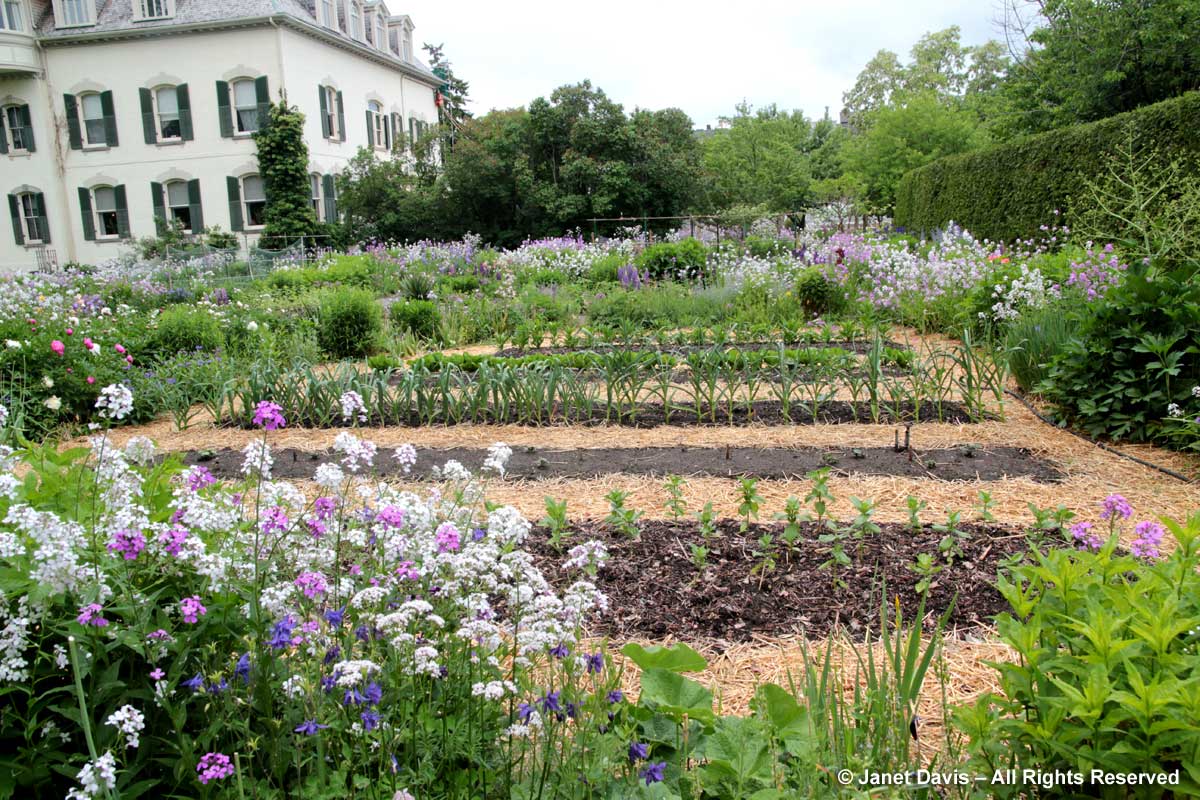
But in early June, it’s all about lupines, irises, sweet rocket, baptisia and peonies, and there’s a decidedly PURPLE tinge to the garden.
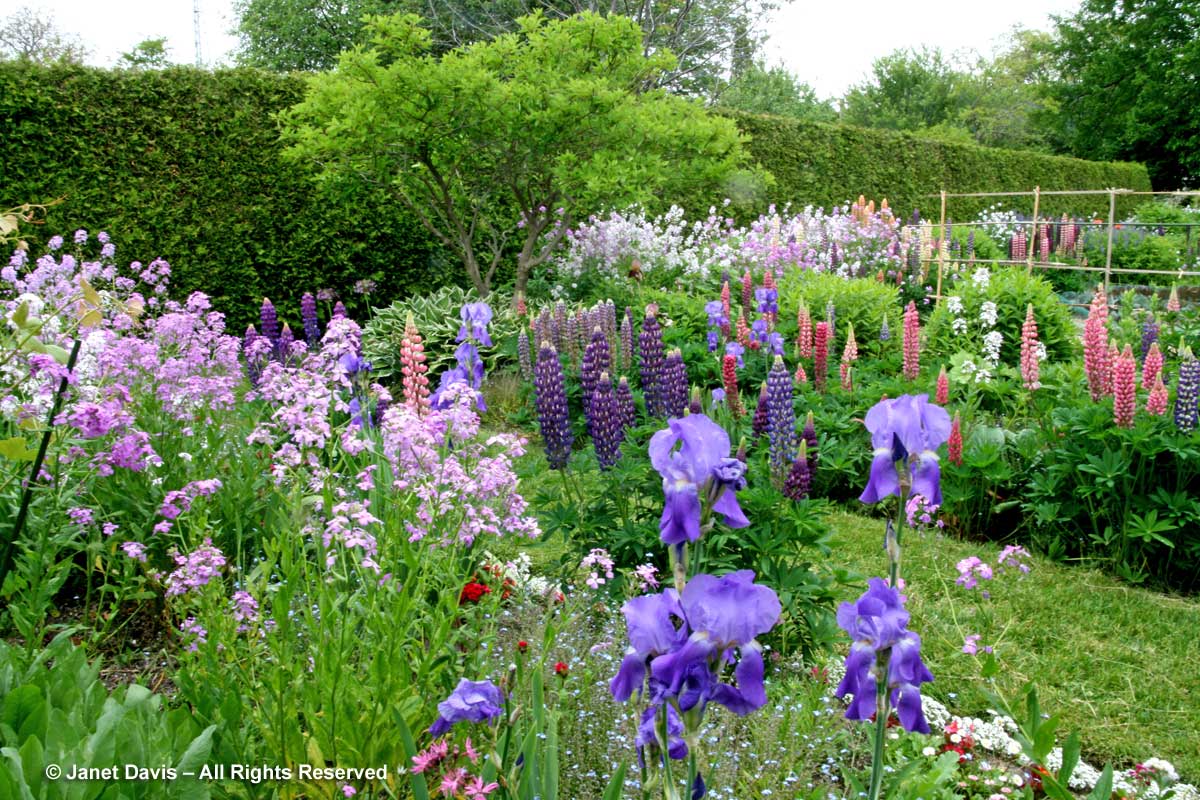
Leaving aside Tyrian purple from ancient history, to my eye this is what purple should look like.
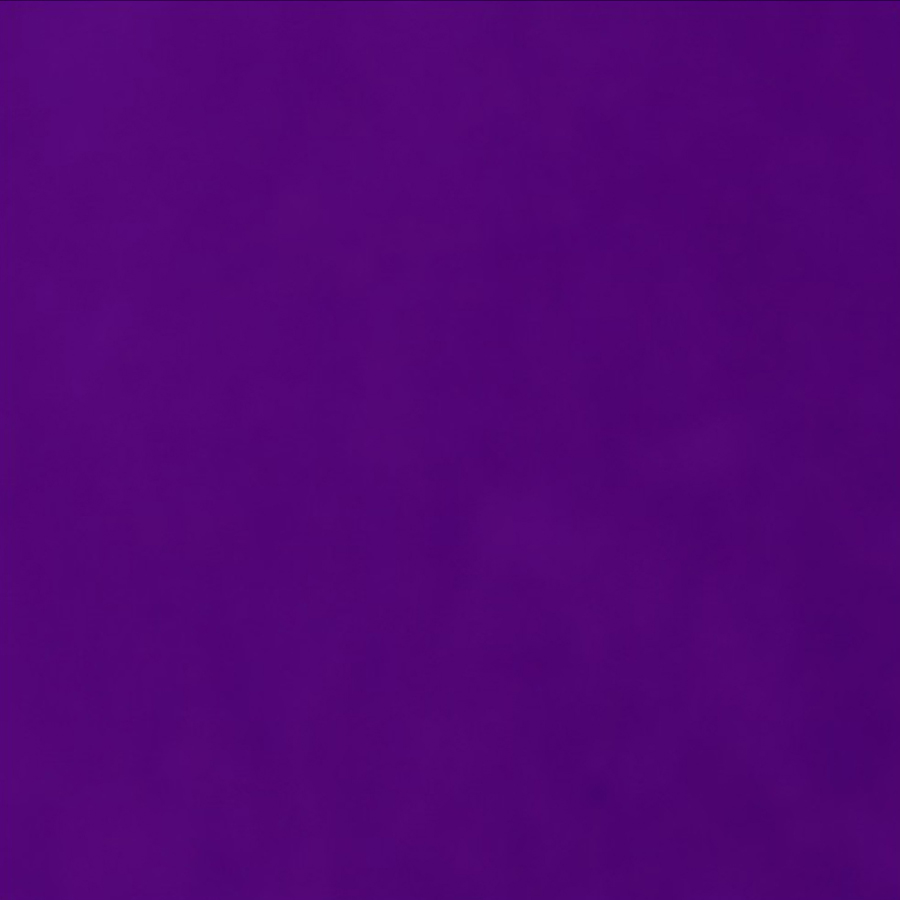
To see a contemporary emblem incorporating the colour purple, look no further than a U.S. military Purple Heart.
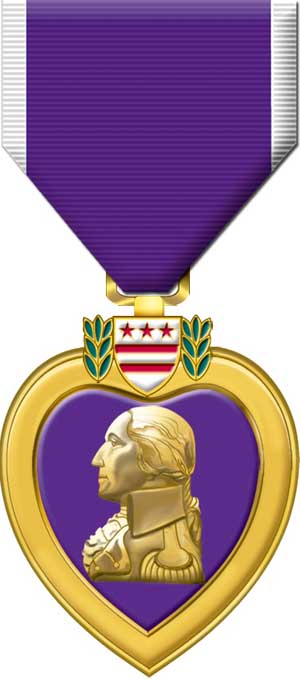
At Spadina House, purple is at its best in the deepest-colored flowers of the gorgeous Russell hybrid lupines. Purple lupines grow with lilac-purple chives (Allium schoeneprasum) ….
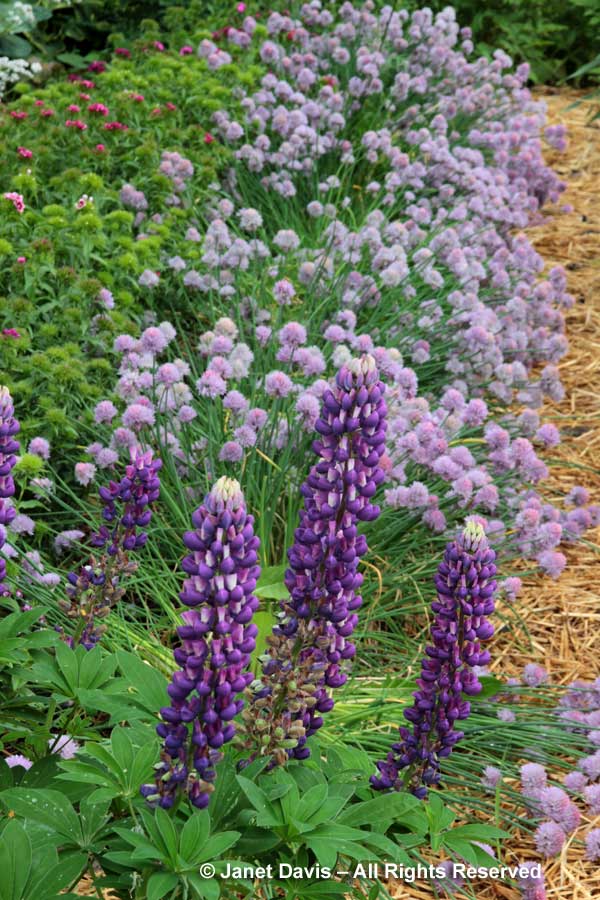
…and with mauve and white sweet rocket or dame’s rocket (Hesperis matronalis) and luscious violet-purple bearded irises….
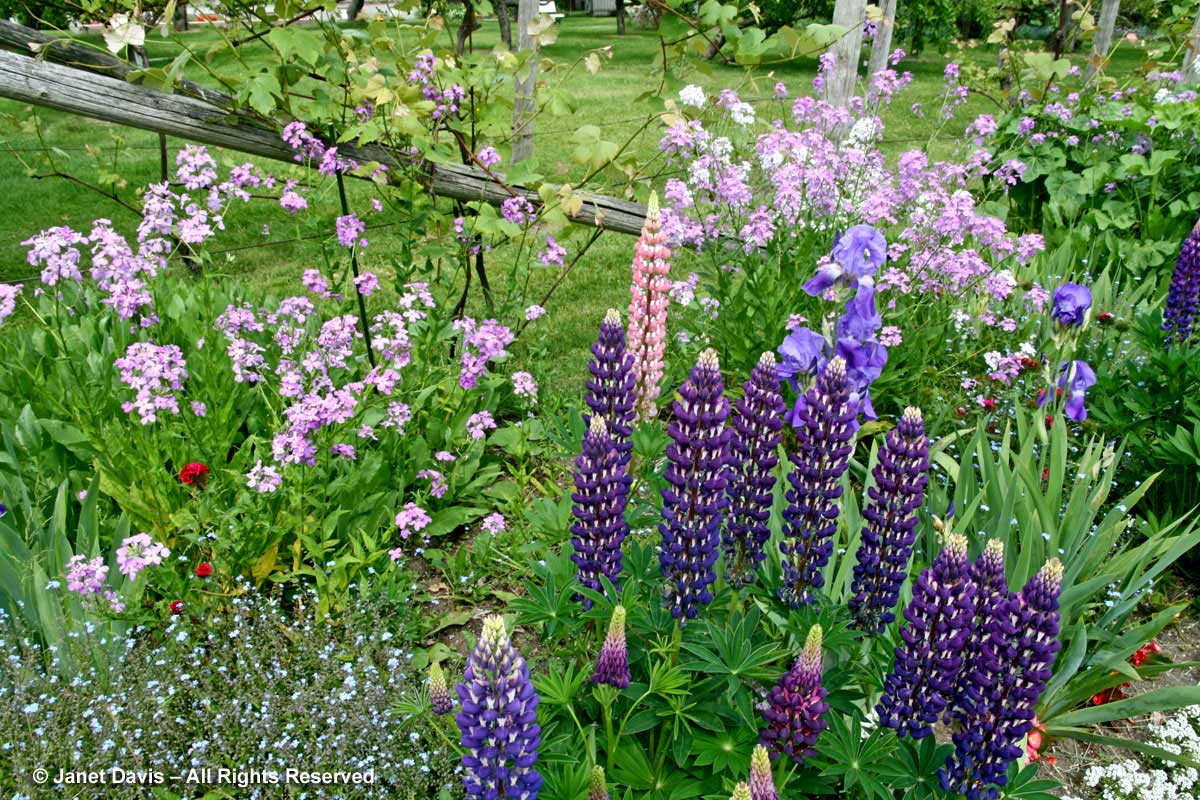
Sometimes those purple lupine flowers have Tyrian purple markings (or what we might nowadays call fuchsia-pink) and attract the attention of bumble bees who are strong enough to force open the petals.
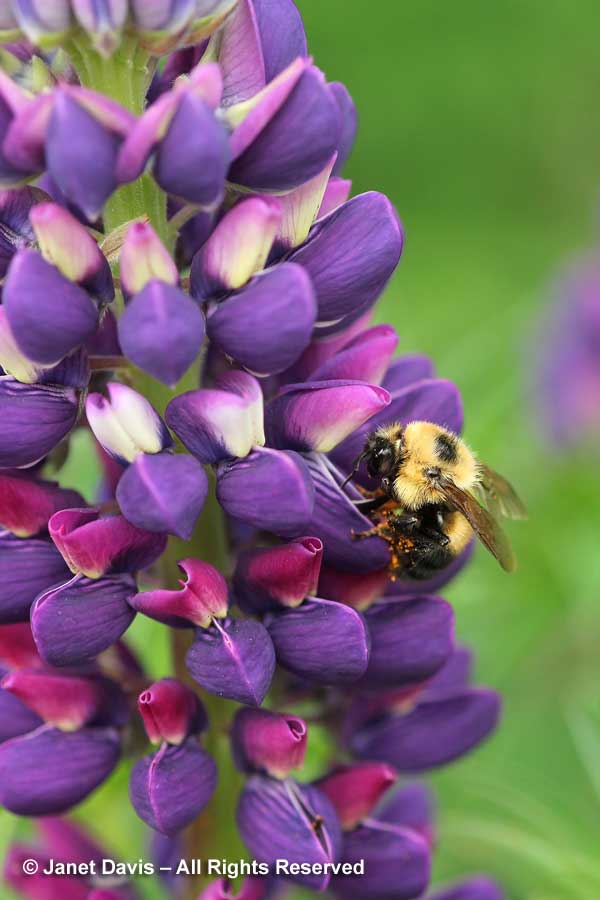
Some of Spadina’s beautiful Siberian irises (Iris sibirica) are also purple.
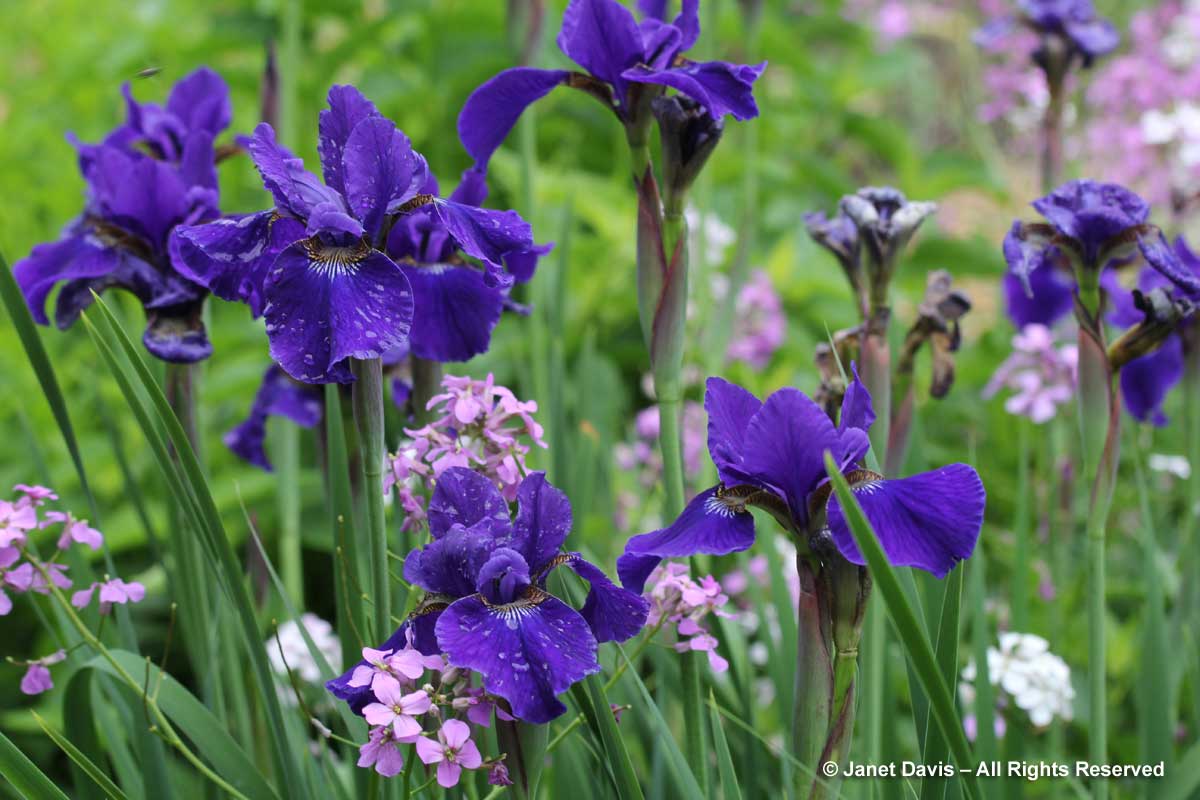
Now I’m going to move on to another ‘purplish’ colour, one that takes its name from the visible spectrum, but also gives its name to a large class of flowers, i.e. violets. In this case, I’ve added a little VIOLET poster girl to the colour swatch, our own native common blue violet Viola sororia. Notice that qualifier “blue”….. ?
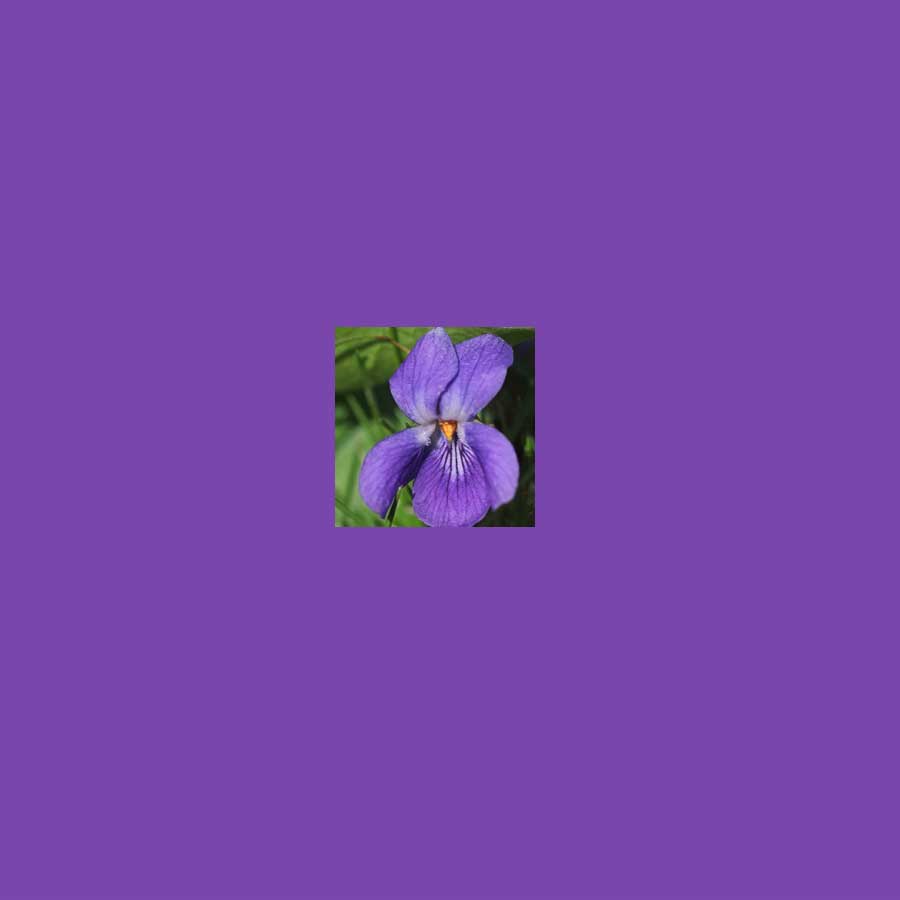
Though colour terminology in flowers is very arbitrary, “violet” is also seen as purple by many, but it does have more blue than my purple swatch above. It is seen in many of Spadina’s lovely old bearded irises. Note the difference in hue from the lupines.
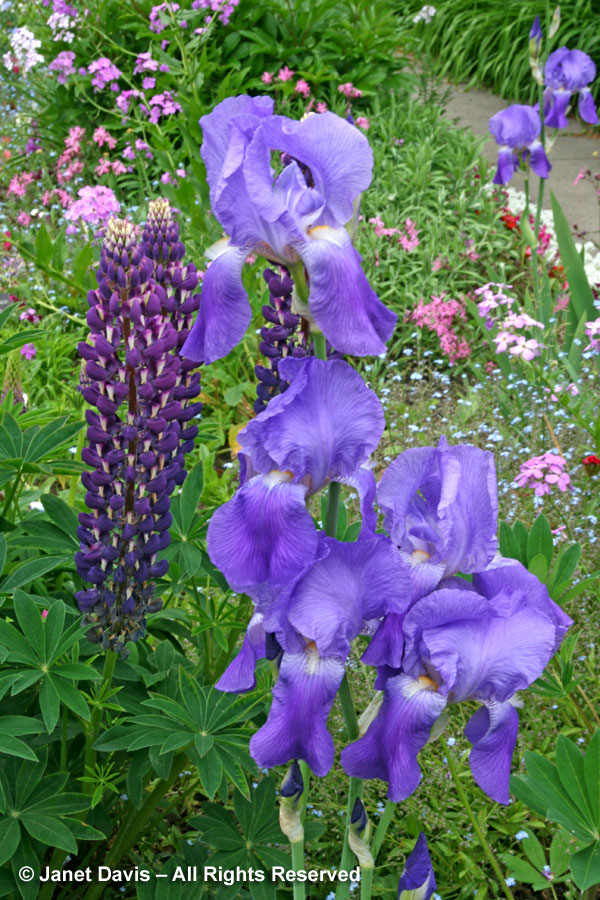
Bearded irises come in a rainbow of colours, but the duo below is the classic complementary contrast of yellow-violet from the artist’s colour wheel.
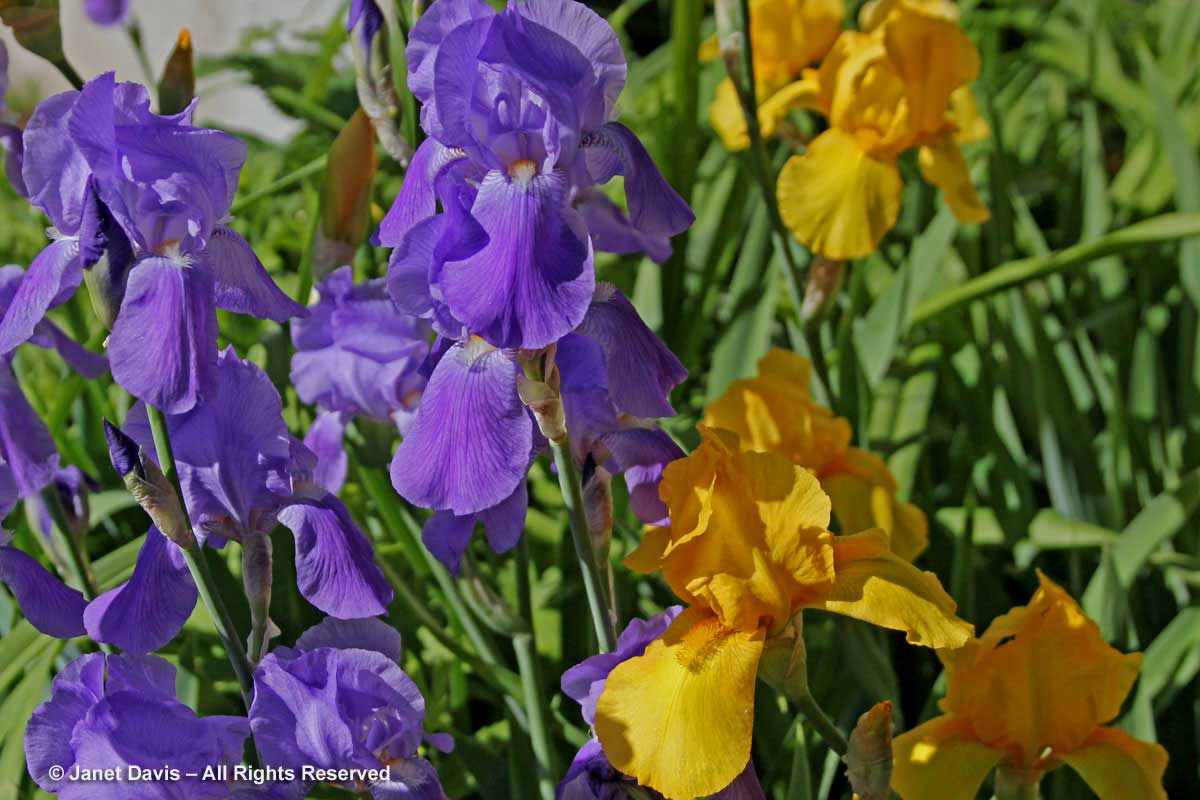
Valerian (Valeriana officinalis), below, is a pretty June companion for violet-purple bearded iris.
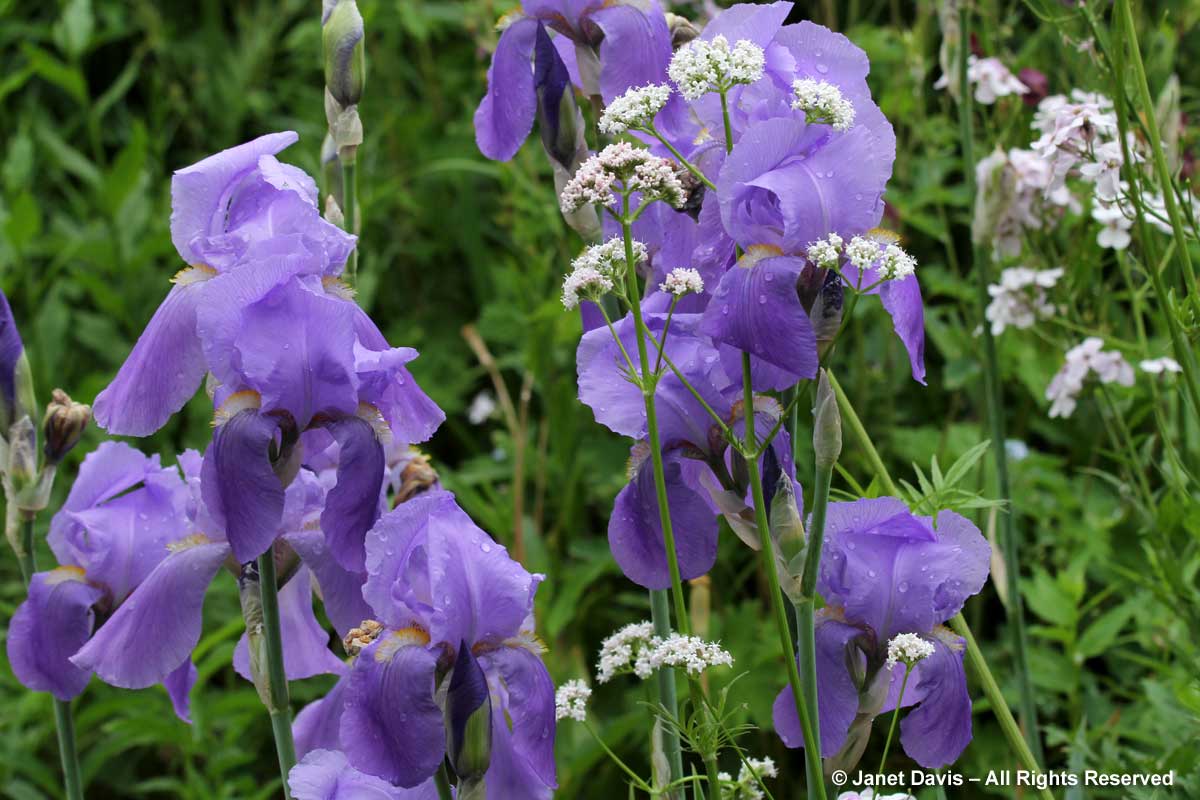
Columbines (Aquilegia vulgaris) are charming June bloomers and their colour can be violet-purple, as well as pink, white, yellow, red and much more.
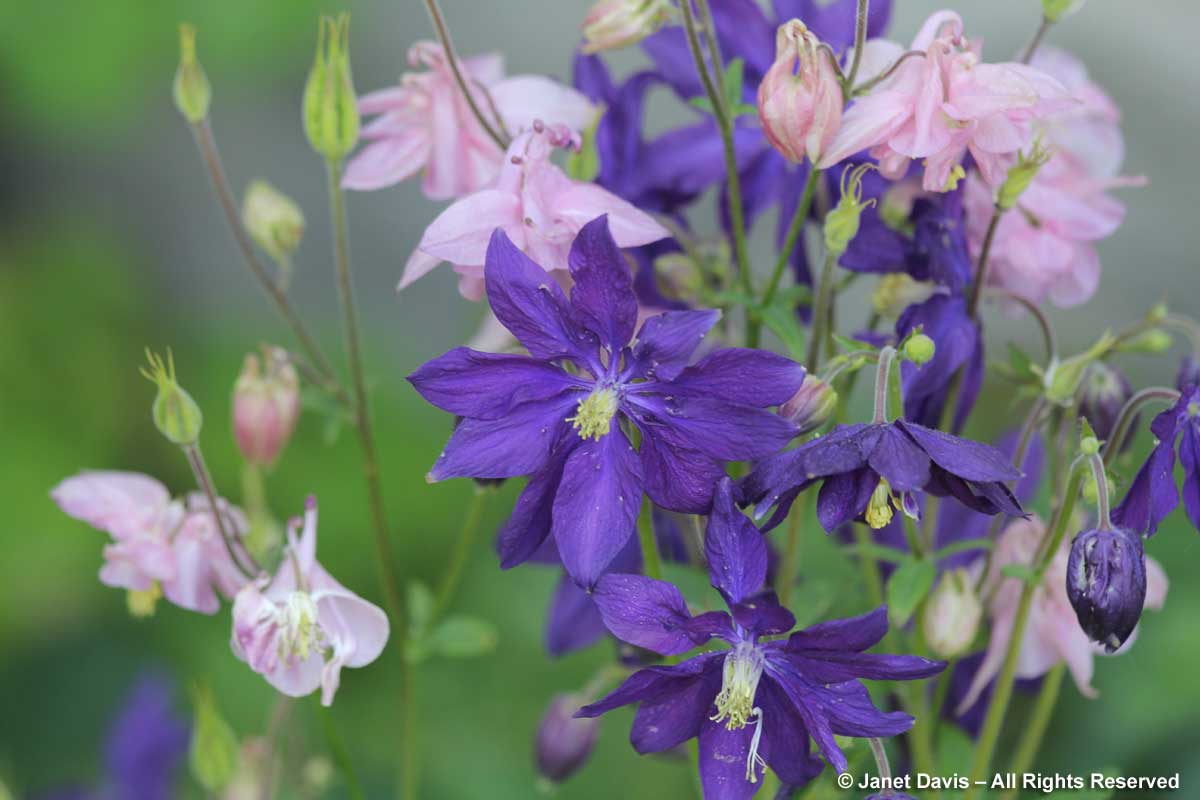
Here with see violet columbines with a single orange poppy (Papaver rupifragum).
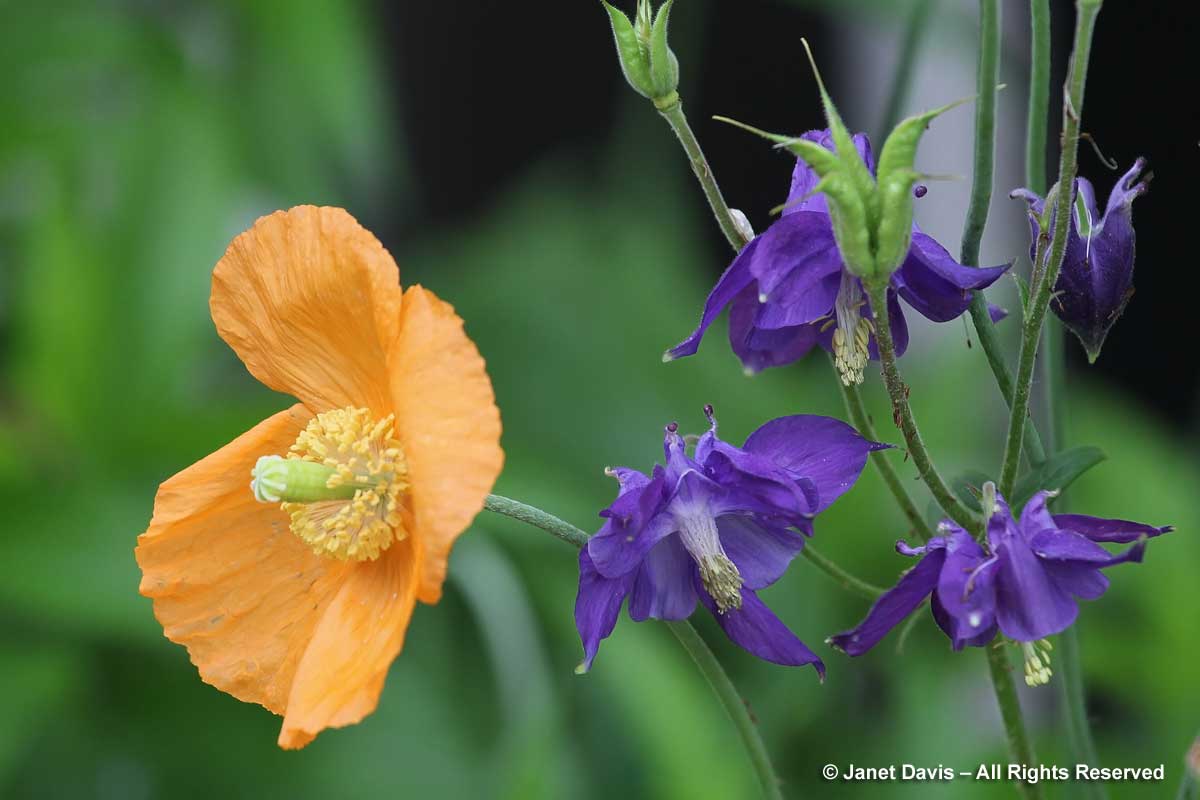
And here is columbine consorting nicely with yellow flag iris (Iris pseudacorus) in front of Spadina’s greenhouse.
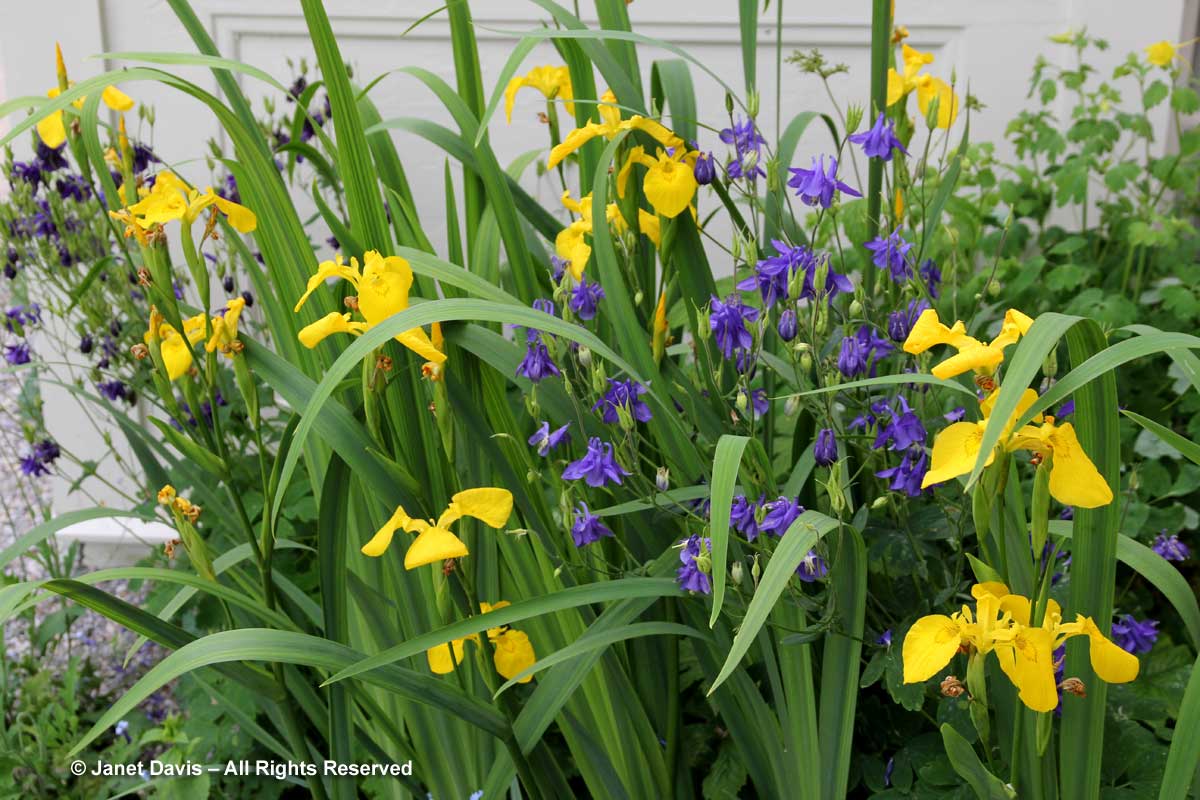
There is an intense colour of violet with much more blue (yet still not completely in the blue camp) that can be described as BLUE-VIOLET, below.

At Spadina House, some of the Siberian irises have much more blue pigment in their petals and can be described as blue-violet.
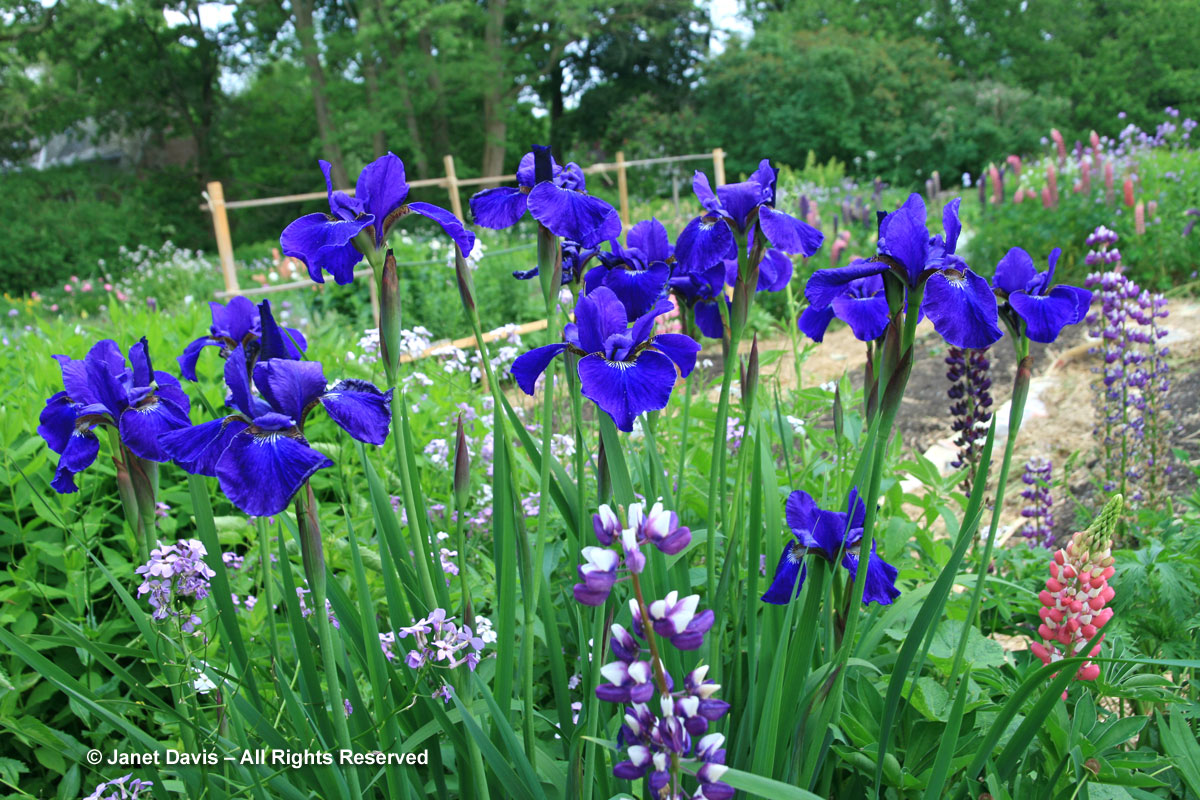
Another purplish colour that borrows its name from the world of flora is LAVENDER. Although there are a number of plants we can call ‘lavender’, the one I think of as having flowers of this colour is English lavender, Lavandula angustifolia. That is the plant I’ve put in my lavender-purple swatch below. Less intense, more blue, but a sort of greyed blue.
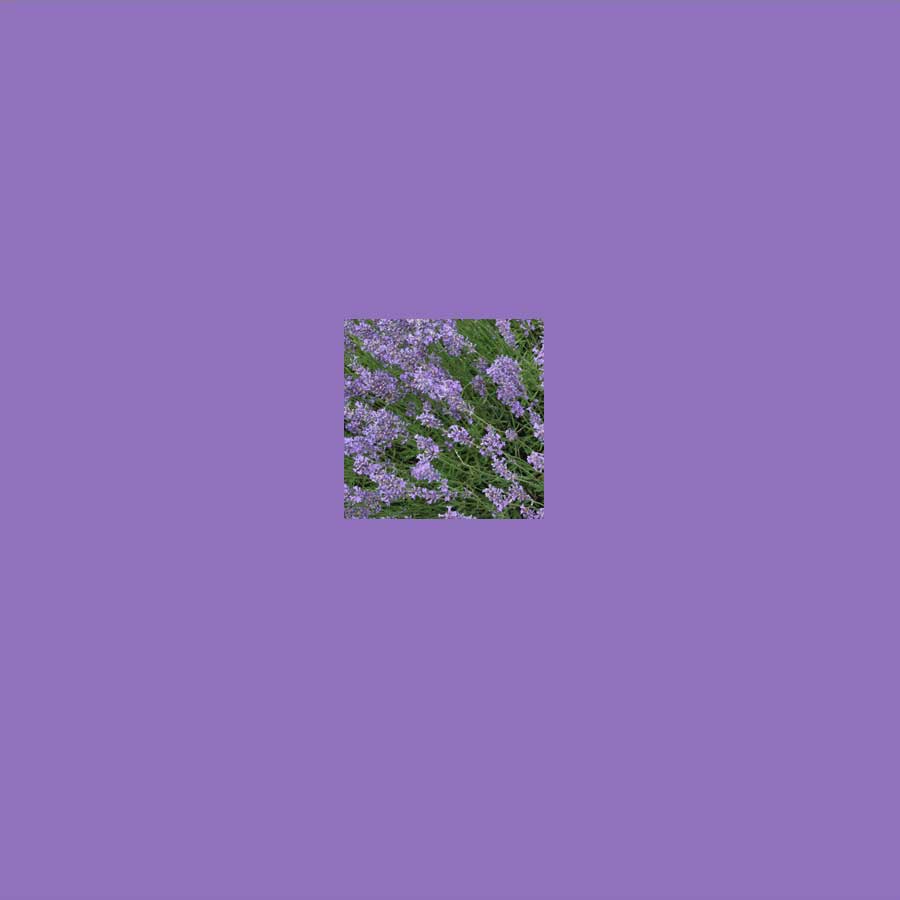
At Spadina House, I do see English lavender in June, looking quite lovely with the miniature pink rose ‘The Fairy’.
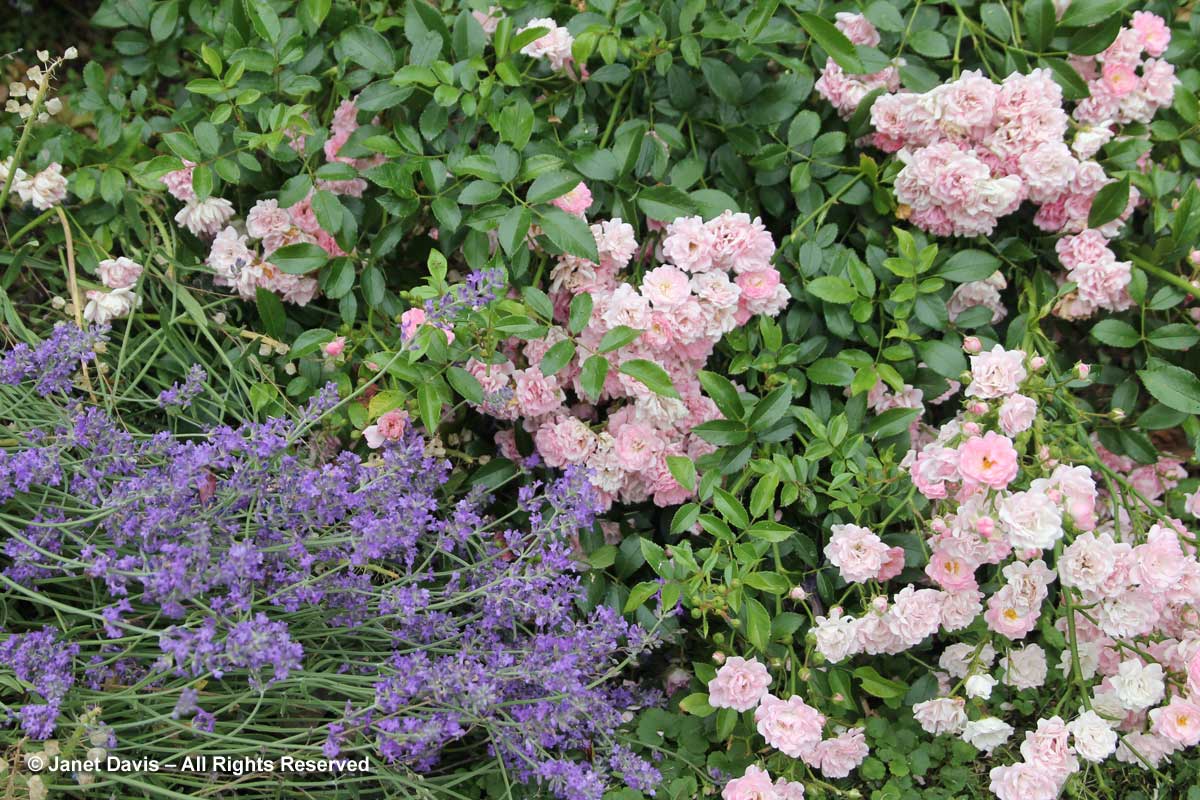
And it’s also in the flowers of the herbaceous clematis, C. integrifolia, seen here with sweet rocket.
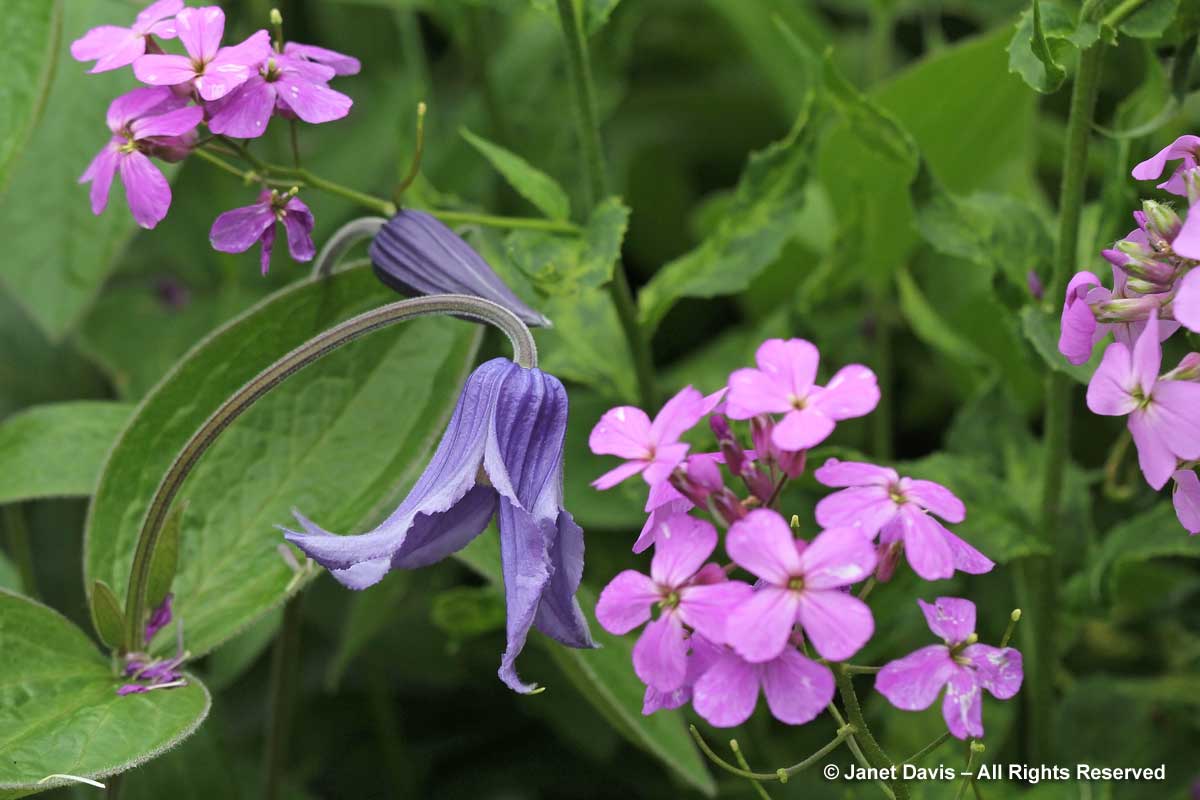
Blue false indigo (Baptisia australis) is a wonderful native northeast perennial, and though it doesn’t sit perfectly in my lavender-purple camp, being a little more intensely blue, it is quite close. And certainly not a true blue.
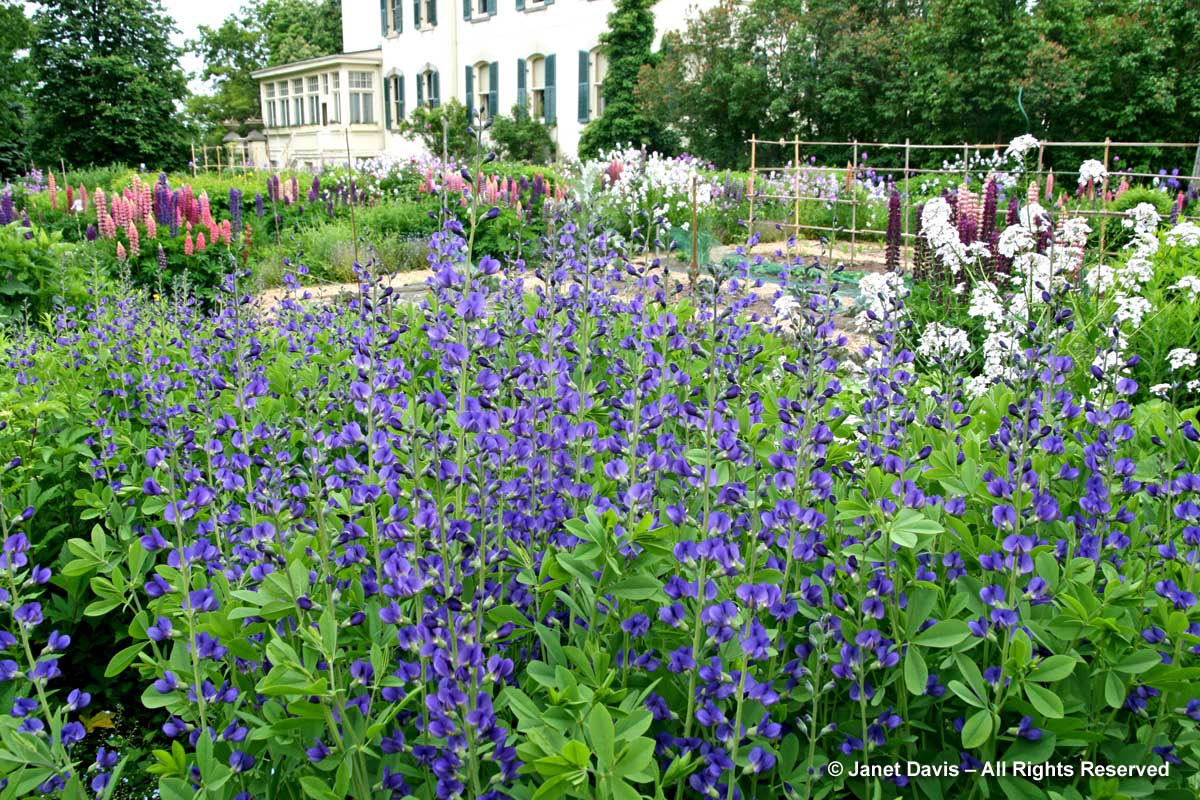
Here it is with the classic white peony ‘Festiva Maxima’. Isn’t this beautiful?
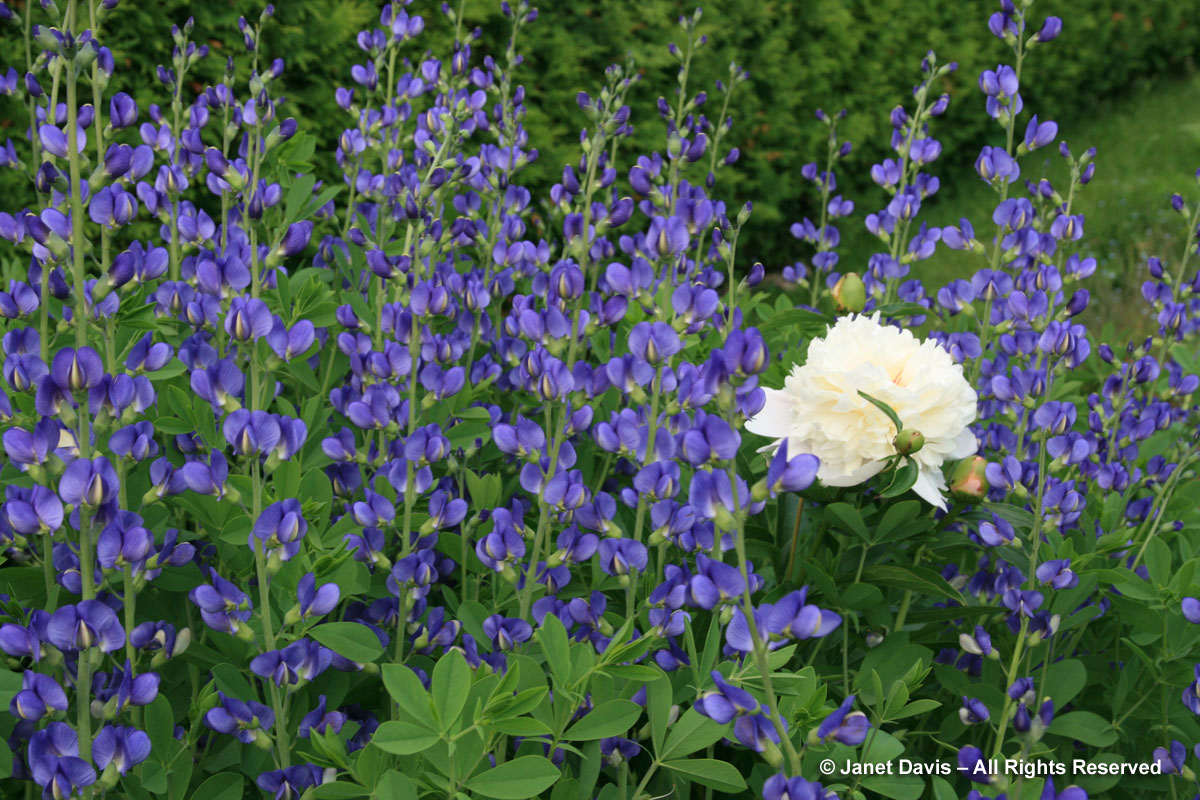
Now we move to yet another variation on blued purple that takes its name from flowers. I’m talking about LILAC. In my view, this one should look as much as possible like the flowers of common lilac (Syringa vulgaris), so that’s what you’ll find in my lilac colour swatch, below. In art terms, this one might be described as a tint, i.e. paler in intensity.
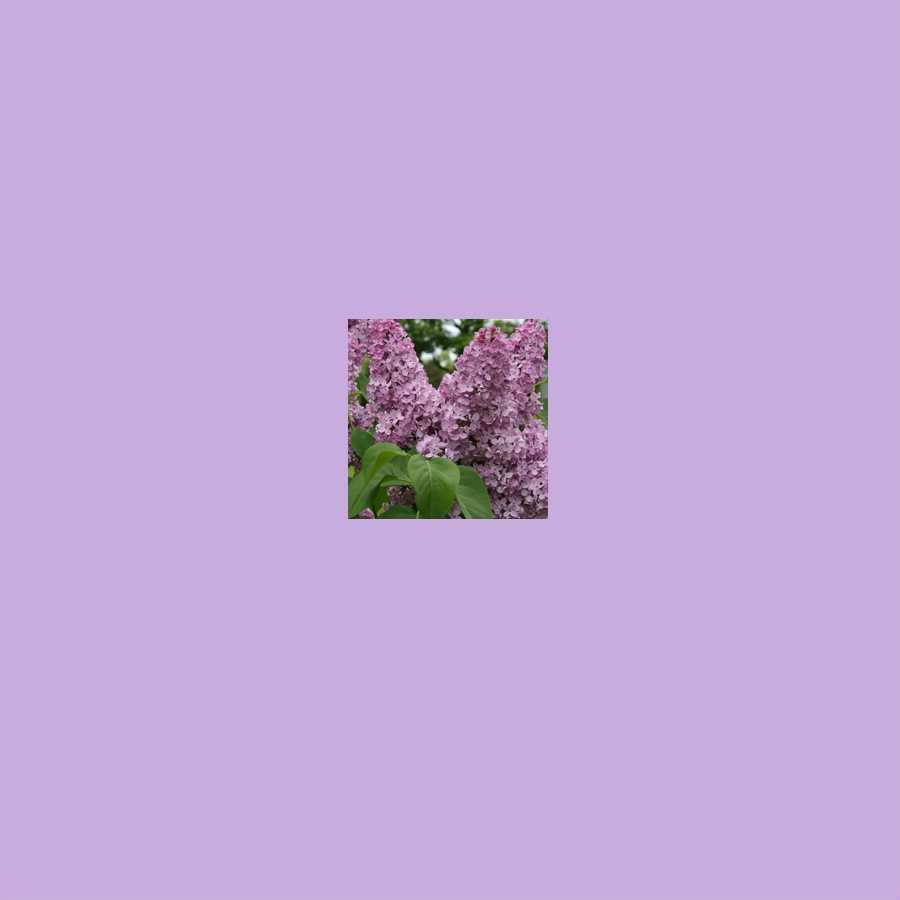
At Spadina, some of the columbines are soft lilac.
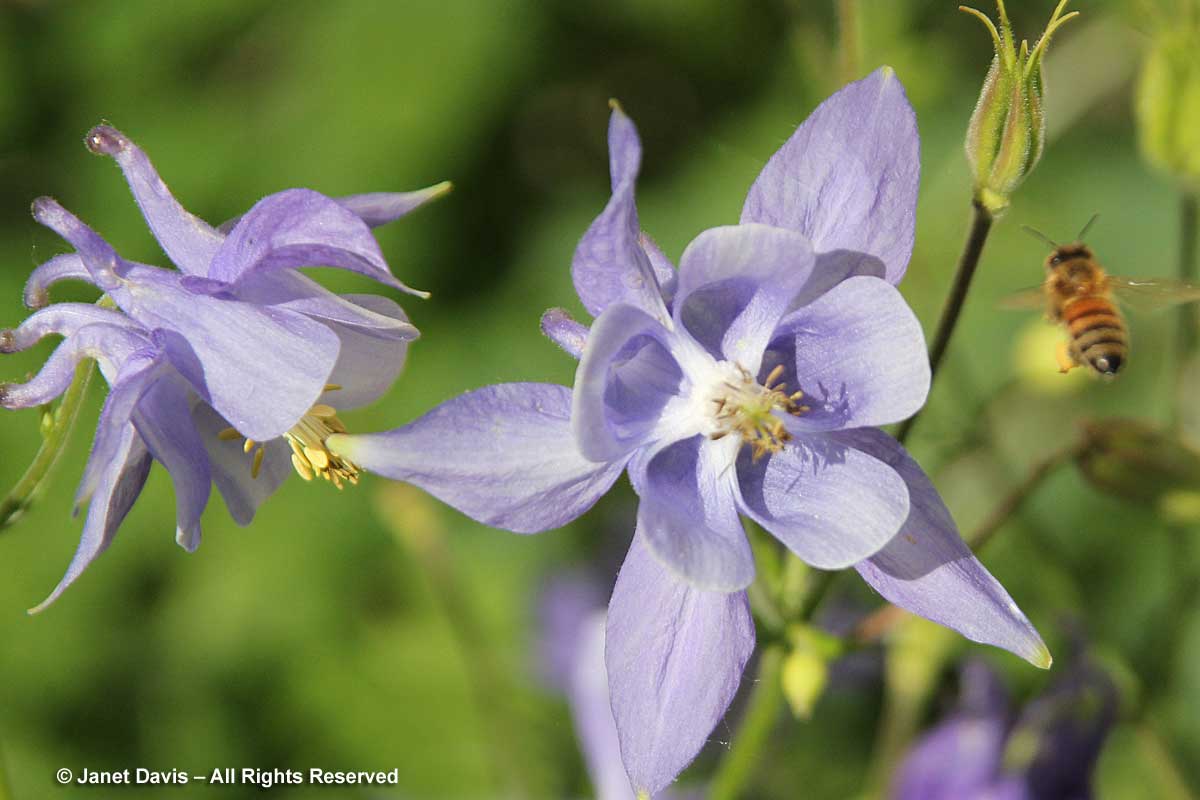
And some of the bearded irises, too, like the luscious heritage iris ‘Mme. Cherault’.
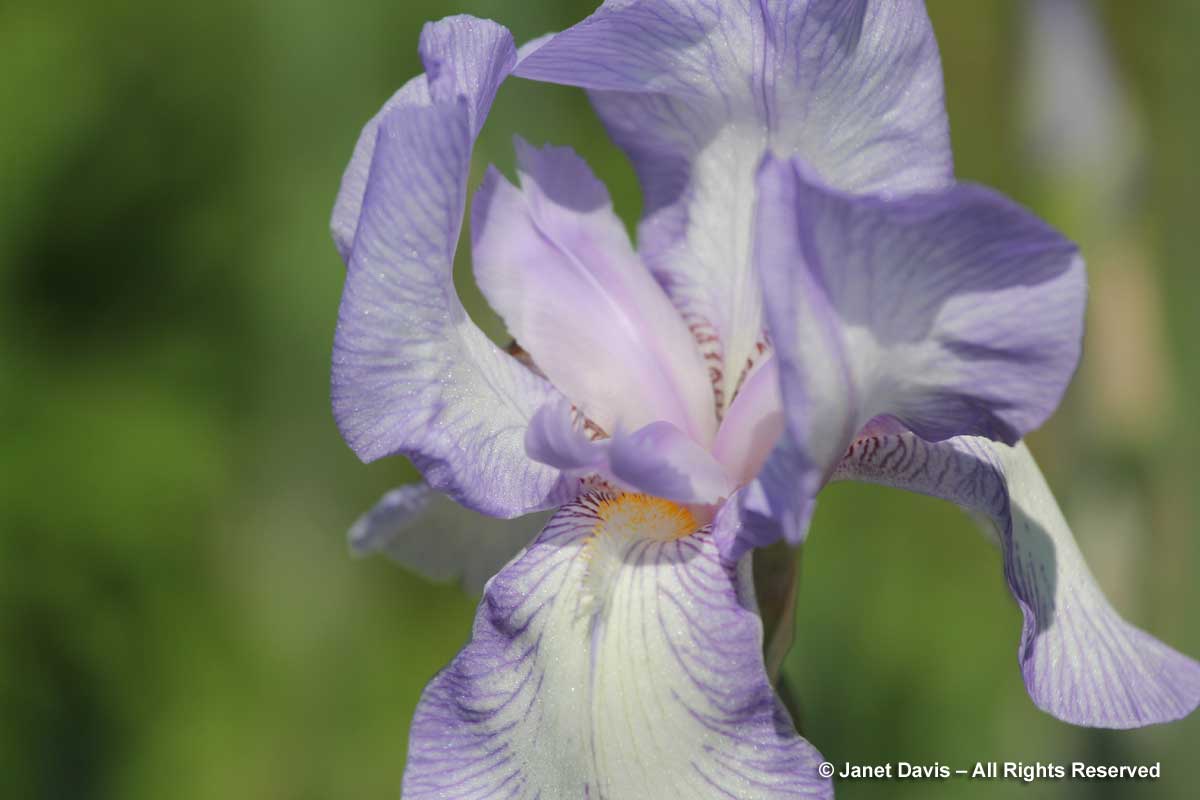
The next variation on purple moves further into the red family. Meet MAUVE, below. This color has its etymological roots in the French language, for the French word for the European wildflower common mallow (M. sylvestris) is la mauve. However, its language roots aren’t buried in ancient Greece, but in east end London in Victorian times. For it was here, in 1856, that Royal College of Chemistry student William Henry Perkin, while using coal tar in a quest to discover a synthetic alternative to malaria-curing quinine, came up with a solution with “a strangely beautiful color”. At first, according to Victoria Finley in her book, he called it Tyrian purple, but changed the name to a French flower (la mauve) “to attract buyers of high fashion”. It was a great hit. “By 1858 every lady in London, Paris and New York who could afford it was wearing ‘mauve’, and Perkin, who had opened a dye factory with his father and brother, was set to be a rich man before he reached his twenty-first birthday.”
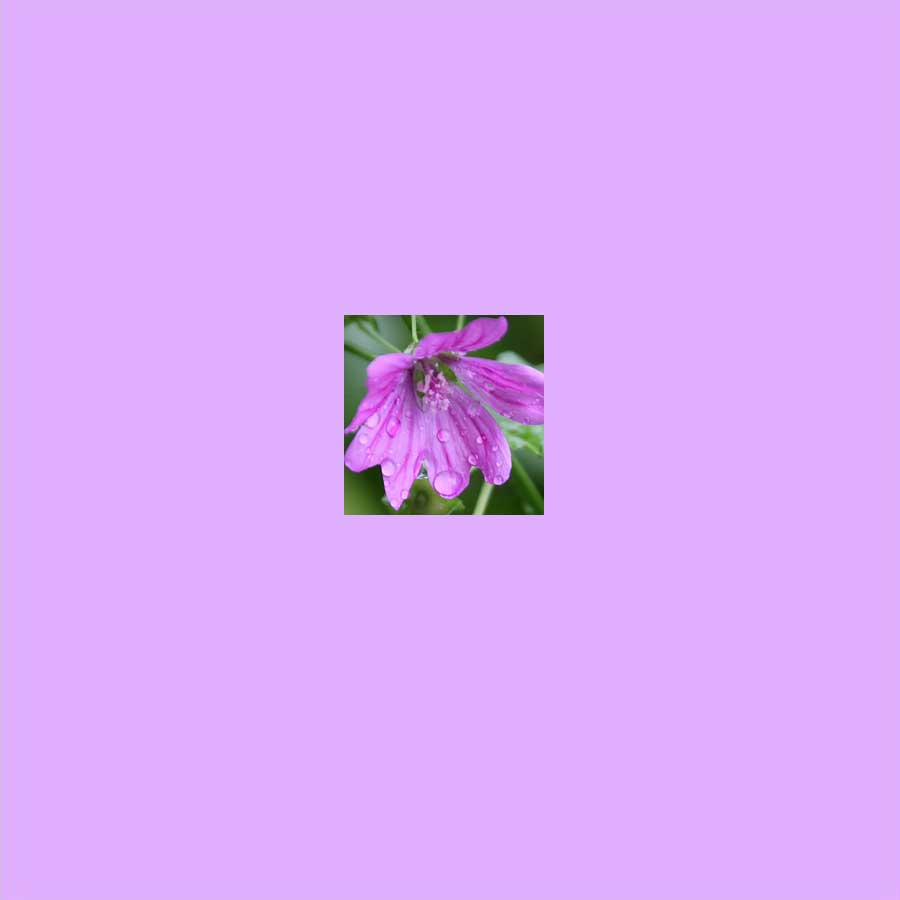
Mauve’s affinity to red means that people will often say “mauve-pink”, rather than mauve-purple, but there are good reasons for including it in my discussion of purples, if only to differentiate it visually from the more blue hues. At Spadina House, we see mauve in many of the sweet rocket flowers (Hesperis matronalis).
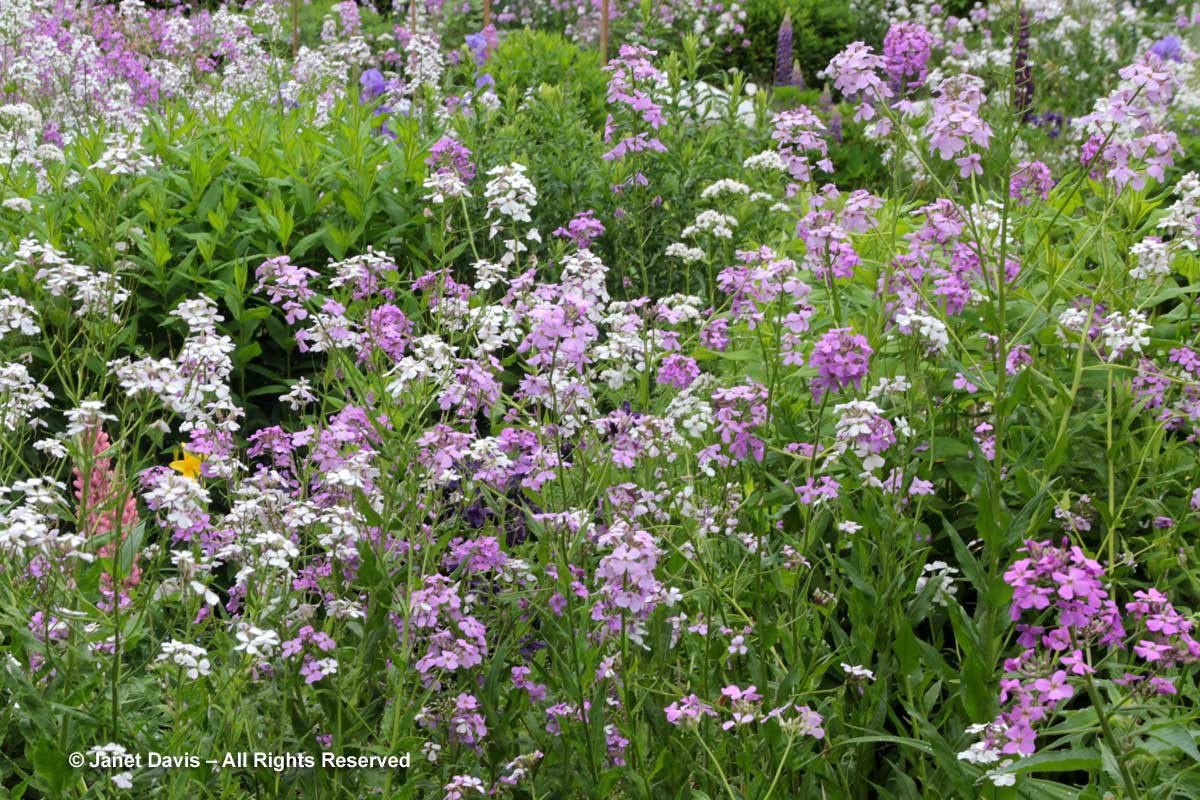
It’s quite clear, when I contrast sweet rocket with some of the irises, that our lexicon for colour proves to be difficult and often ambiguous. Colour vision is a relationship, not an absolute, that depends on our own eyes and of course colour rendition in the medium for viewing, if not in ‘real life’, i.e. a phone or computer screen. What I see is a mauve sweet rocket flower beside a bearded iris with light violet standards and true purple splotches on the falls. But this is a tough one!
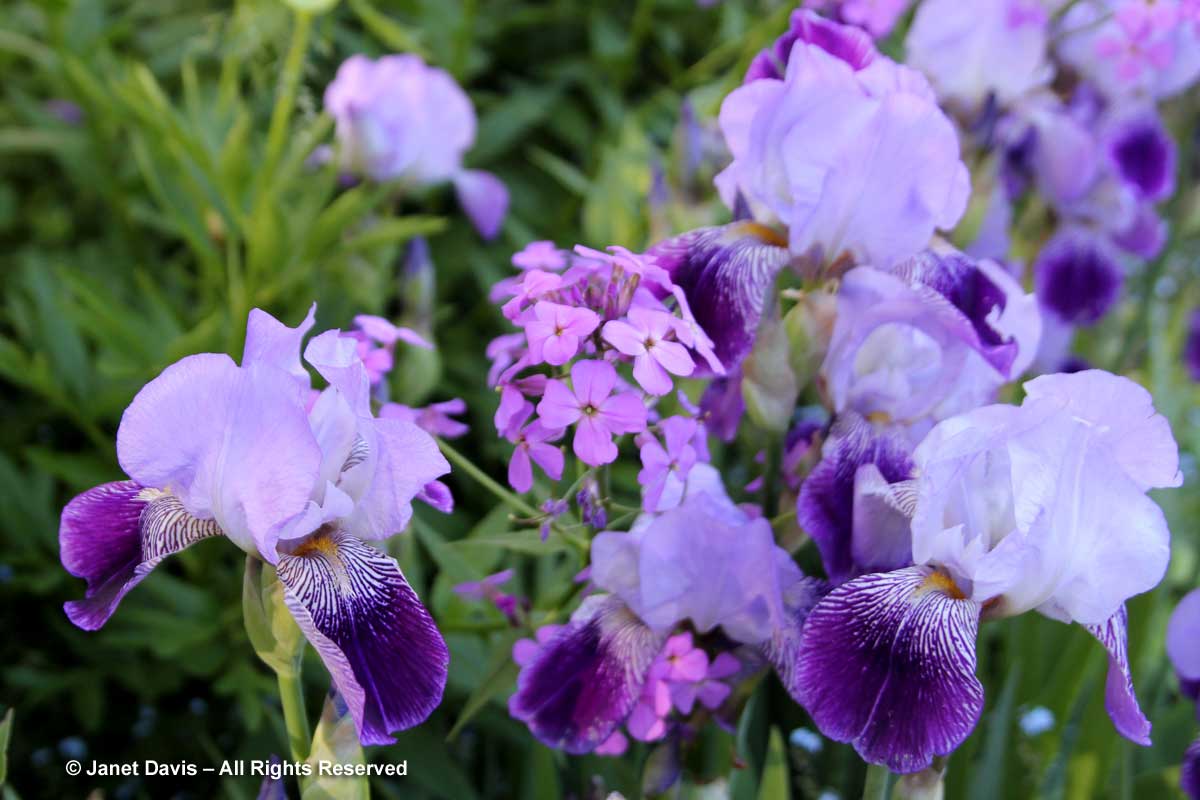
Finally, here is mauve sweet rocket with more of Spadina’s beautiful lupines. And what colour do you think those lupines are? I will leave that one with you to ponder.
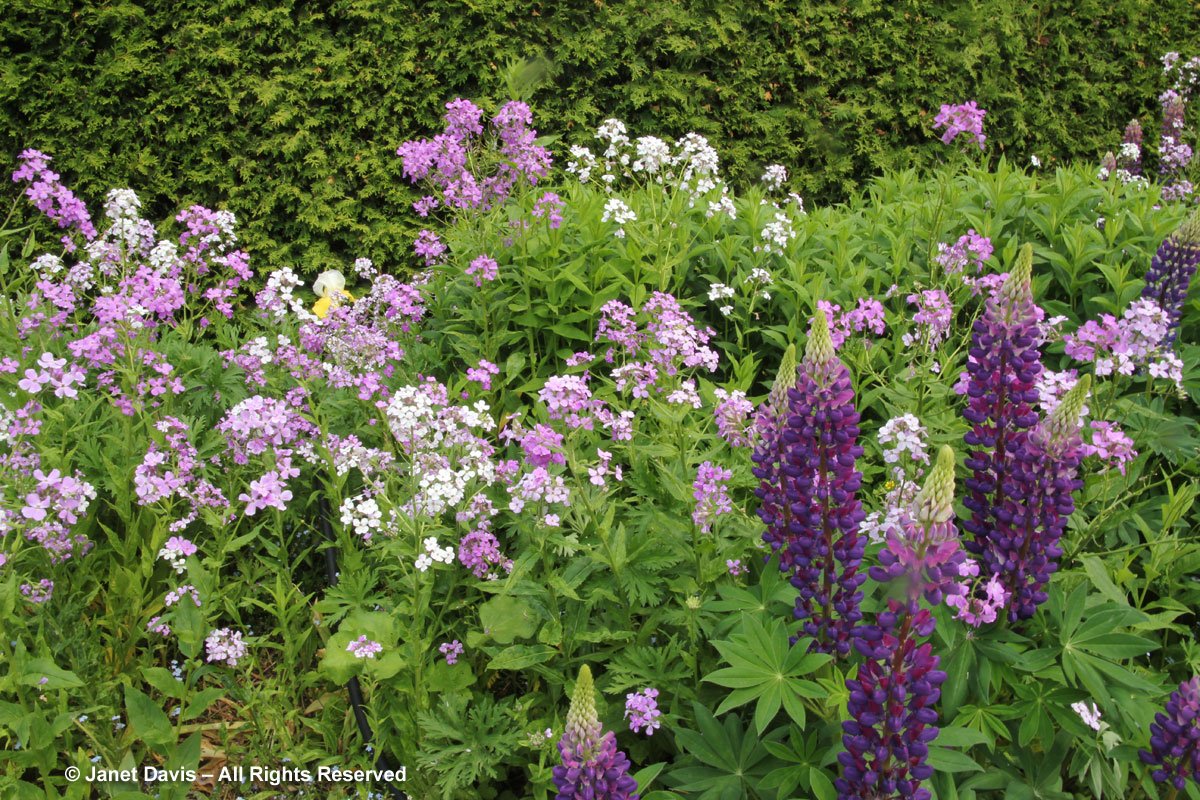
Later in the month, I promise another look at purple — this time without quite so much colour terminology. Happy June!
